
PayPal Holdings Inc - Climate Change 2023
C0. Introduction
C0.1
(C0.1) Give a general description and introduction to your organization.
PayPal Holdings, Inc. (PayPal) is a leading technology platform headquartered in the United States that enables digital payments and simplifies commerce experiences on
behalf of merchants and consumers worldwide. For more than 20 years, we have remained focused on our mission to make financial services and commerce more affordable,
convenient and secure for all.
We are committed to democratizing financial services to help improve the financial health of individuals and to increase economic opportunity for entrepreneurs and
businesses of all sizes around the world. Our goal is to enable our merchants and consumers to manage and move their money anywhere in the world in the markets we
serve, anytime, on any platform, and using any device when sending payments or getting paid. We operate a global, two-sided network at scale that connects merchants and
consumers with 435 million active accounts across more than 200 markets as of December 31, 2022.
PayPal’s payment solutions enable our customers to connect, transact, and send and receive payments, whether they are online or in person. We provide proprietary
payment solutions accepted by merchants that enable the completion of payments on our payments platform on behalf of our customers. We offer our customers the flexibility
to use their PayPal or Venmo accounts to purchase and receive payments for goods and services, as well as the ability to transfer and withdraw funds. We enable consumers
to exchange funds more safely with merchants using a variety of funding sources, which may include a bank account, a PayPal or Venmo account balance, PayPal and
Venmo branded credit products including our installment products, a credit card, a debit card, certain cryptocurrencies, or other stored value products such as gift cards, and
eligible rewards. Our PayPal, Venmo, and Xoom products also make it safer and simpler for friends and family to transfer funds to each other. We offer merchants an end-to-
end payments solution that provides authorization and settlement capabilities, as well as instant access to funds and payouts. We also help merchants connect with their
customers, process exchanges and returns, and manage risk. We help reduce the friction typically involved in cross-border commerce by offering consumers a simple
payment experience and by enabling merchants to extend their reach to consumers in the global markets in which our services are available.
C0.2
(C0.2) State the start and end date of the year for which you are reporting data and indicate whether you will be providing emissions data for past reporting
years.
Reporting year
Start date
January 1 2022
End date
December 31 2022
Indicate if you are providing emissions data for past reporting years
No
Select the number of past reporting years you will be providing Scope 1 emissions data for
<Not Applicable>
Select the number of past reporting years you will be providing Scope 2 emissions data for
<Not Applicable>
Select the number of past reporting years you will be providing Scope 3 emissions data for
<Not Applicable>
C0.3
CDP Page of 631
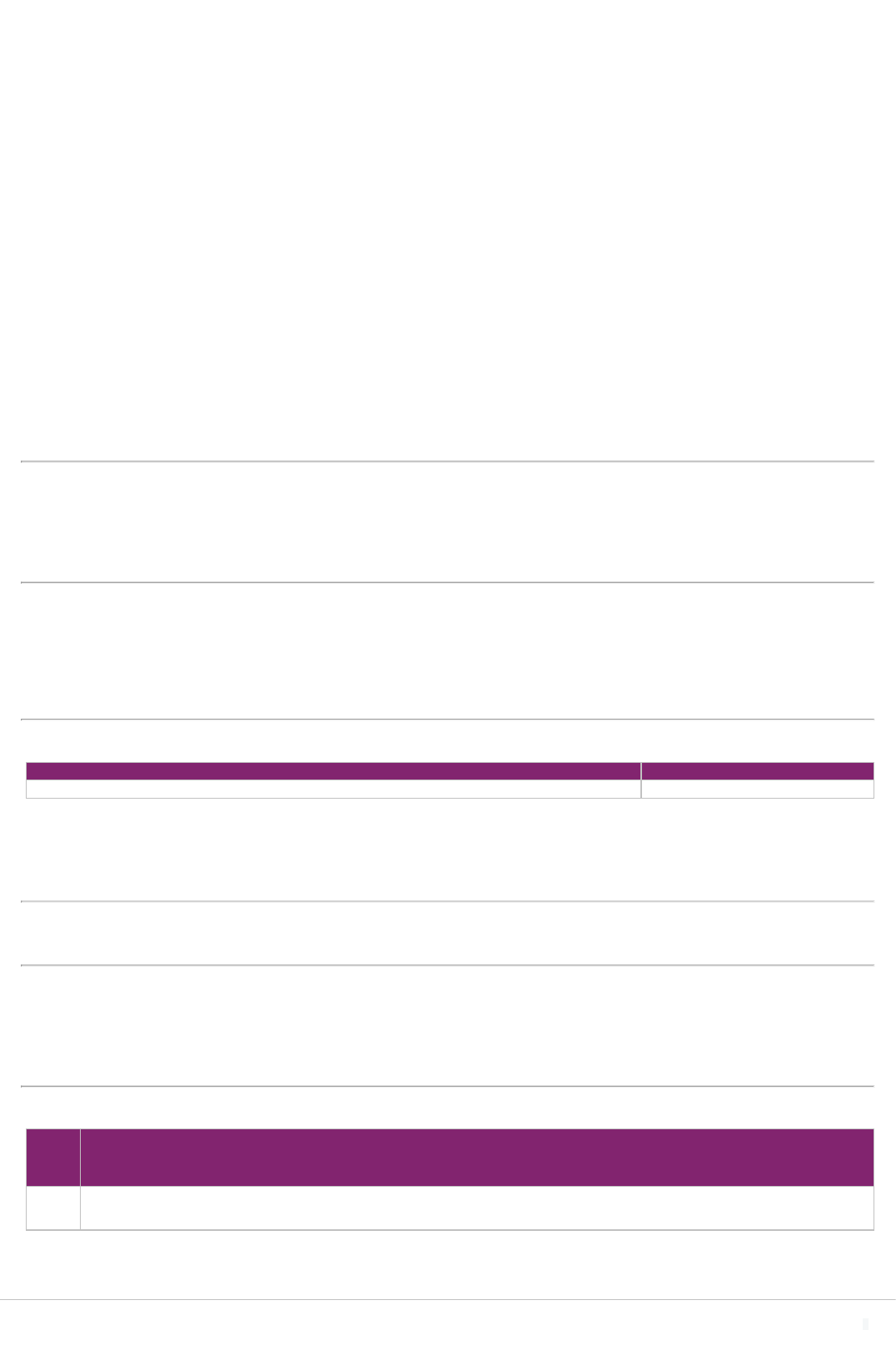
(C0.3) Select the countries/areas in which you operate.
Australia
Brazil
Canada
China
France
Germany
Guatemala
Hong Kong SAR, China
India
Ireland
Israel
Italy
Japan
Luxembourg
Mexico
Philippines
Poland
Russian Federation
Singapore
Spain
Sweden
United Kingdom of Great Britain and Northern Ireland
United States of America
C0.4
(C0.4) Select the currency used for all financial information disclosed throughout your response.
USD
C0.5
(C0.5) Select the option that describes the reporting boundary for which climate-related impacts on your business are being reported. Note that this option should
align with your chosen approach for consolidating your GHG inventory.
Operational control
C0.8
(C0.8) Does your organization have an ISIN code or another unique identifier (e.g., Ticker, CUSIP, etc.)?
Indicate whether you are able to provide a unique identifier for your organization Provide your unique identifier
Yes, a Ticker symbol PYPL
C1. Governance
C1.1
(C1.1) Is there board-level oversight of climate-related issues within your organization?
Yes
C1.1a
(C1.1a) Identify the position(s) (do not include any names) of the individual(s) on the board with responsibility for climate-related issues.
Position of
individual
or
committee
Responsibilities for climate-related issues
Board-level
committee
As specified in its publicly available Charter, the Corporate Governance and Nominating Committee of PayPal’s Board of Directors provides oversight of environmental, social and governance (ESG)
matters, including climate-related issues. The Committee’s responsibilities include reviewing progress in developing and implementing strategies for managing environmental issues, including
management of climate-related risks and opportunities, as well as overseeing the establishment of and progress toward fulfilling public environmental sustainability commitments.
CDP Page of 632

C1.1b
(C1.1b) Provide further details on the board’s oversight of climate-related issues.
Frequency
with which
climate-
related
issues are a
scheduled
agenda item
Governance
mechanisms
into which
climate-
related issues
are integrated
Scope of
board-
level
oversight
Please explain
Scheduled –
some
meetings
Reviewing and
guiding
strategy
Overseeing
and guiding the
development of
a transition
plan
Monitoring the
implementation
of a transition
plan
Overseeing the
setting of
corporate
targets
Monitoring
progress
towards
corporate
targets
Reviewing and
guiding the risk
management
process
<Not
Applicabl
e>
PayPal leadership provides quarterly updates to the Board’s Corporate Governance and Nominating Committee on ESG-related matters, including specific climate-related
issues. Pertinent updates are then shared with the full Board. This includes regular reporting on enterprise-wide climate targets, future strategies, stakeholder
engagements, progress on climate-related targets, and other key implementation updates. For example, in 2022, PayPal leadership briefed the Committee on climate-
related agenda items including our annual emissions reporting, progress on our science-based climate targets and our renewable energy goal for our data centers
(achieving 100% since 2021), and our climate equity and resilience strategy and initiatives. We also discussed the emerging and evolving mandatory climate disclosure
regulations globally, stakeholder expectations, and our transition planning for PayPal to reach net-zero emissions by 2040.
C1.1d
(C1.1d) Does your organization have at least one board member with competence on climate-related issues?
Board
member(s)
have
competence
on climate-
related
issues
Criteria used to assess competence of board member(s) on climate-related issues Primary
reason for
no board-
level
competence
on climate-
related
issues
Explain why your
organization does not have
at least one board member
with competence on climate-
related issues and any plans
to address board-level
competence in the future
Row
1
Yes The Corporate Governance and Nominating Committee of PayPal’s Board of Directors annually reviews with the Board the core skills,
qualifications, experience, expertise and attributes of Board nominees that we consider most relevant in light of our current business strategy and
structure. Our Board skills matrix included in our 2023 Proxy Statement includes an assessment of ESG-related skills and expertise for each of our
Board directors. This assessment included consideration of each director’s expertise and experience with respect to environmental risks and
opportunities, including through executive experience, other public company board positions, and key qualifications. For example, PayPal’s
Corporate Governance and Nominating Committee Chair also serves as President and CEO of the American Red Cross and as a director of DTE
Energy.
<Not
Applicable>
<Not Applicable>
C1.2
CDP Page of 633

(C1.2) Provide the highest management-level position(s) or committee(s) with responsibility for climate-related issues.
Position or committee
Other C-Suite Officer, please specify (Chief Corporate Affairs Officer)
Climate-related responsibilities of this position
Managing annual budgets for climate mitigation activities
Developing a climate transition plan
Implementing a climate transition plan
Setting climate-related corporate targets
Monitoring progress against climate-related corporate targets
Managing public policy engagement that may impact the climate
Managing value chain engagement on climate-related issues
Assessing climate-related risks and opportunities
Managing climate-related risks and opportunities
Coverage of responsibilities
<Not Applicable>
Reporting line
CEO reporting line
Frequency of reporting to the board on climate-related issues via this reporting line
Quarterly
Please explain
PayPal executives, including our Chief Corporate Affairs Officer and Chief Financial Officer, lead the management of PayPal’s ESG strategy and program, including climate-
related risks and opportunities in close collaboration with other senior executives such as our EVP of People and Sourcing, Chief Information Officer and Chief Risk and
Compliance Officer. These senior leaders and their teams provide regular updates to the Board and associated Committees on climate- and ESG-related topics, when
appropriate.
C1.3
(C1.3) Do you provide incentives for the management of climate-related issues, including the attainment of targets?
Provide incentives for the management of climate-related issues Comment
Row 1 Yes
C1.3a
(C1.3a) Provide further details on the incentives provided for the management of climate-related issues (do not include the names of individuals).
Entitled to incentive
Business unit manager
Type of incentive
Monetary reward
Incentive(s)
Bonus - % of salary
Performance indicator(s)
Progress towards a climate-related target
Incentive plan(s) this incentive is linked to
Short-Term Incentive Plan
Further details of incentive(s)
All non-executive employees have an opportunity to earn annual incentive compensation based on company performance and individual performance. 50% of awards to
employees under the Annual Incentive Plan (AIP) is based on company performance, with the remaining 50% based on individual performance. Each employee is
assessed on their individual contribution ranging from 0% to 200%. This assessment includes annual performance on targets, expectations, and objectives based on the
individual’s team, function, and role.
Explain how this incentive contributes to the implementation of your organization’s climate commitments and/or climate transition plan
Members of our infrastructure and data center organization have individual performance objectives related to our goal of reaching 100% renewable energy across our data
centers by 2023. Performance against these objectives is then considered in their annual performance evaluation, which factors into the individual performance component
of their Annual Incentive Plan (AIP) award.
C2. Risks and opportunities
C2.1
CDP Page of 634

(C2.1) Does your organization have a process for identifying, assessing, and responding to climate-related risks and opportunities?
Yes
C2.1a
(C2.1a) How does your organization define short-, medium- and long-term time horizons?
From (years) To (years) Comment
Short-term 0 3
Medium-term 3 5
Long-term 5 10
C2.1b
(C2.1b) How does your organization define substantive financial or strategic impact on your business?
PayPal uses a number of methods to define substantive financial or strategic impact when considering risks and opportunities, including those related to climate change,
across our global business. For example, we consider potential qualitative and quantitative impacts of climate change on our financial condition and results of operations,
including impacts to our balance sheet and income statement. Quantitatively, we begin our evaluation using our SOX financial statement materiality threshold, which is
calculated annually based on the average of our prior year actual and current year forecasted GAAP operating income. However, we also recognize the importance of
intangible value and consider strategic impacts related to brand value, reputational risk, future business opportunities, and investor and customer expectations, among others.
When reviewing potential risks and opportunities, senior leaders at PayPal evaluate a broad set of data points, including those described above, and consult with internal
experts to estimate the magnitude of the impact and take appropriate responsive actions.
C2.2
(C2.2) Describe your process(es) for identifying, assessing and responding to climate-related risks and opportunities.
Value chain stage(s) covered
Direct operations
Upstream
Downstream
Risk management process
Integrated into multi-disciplinary company-wide risk management process
Frequency of assessment
Annually
Time horizon(s) covered
Short-term
Medium-term
Long-term
Description of process
PayPal applies an integrated and multi-disciplinary company-wide approach to enterprise risk management using the Three Lines of Defense model, which includes
management, oversight, and independent assurance. Our Enterprise Risk and Compliance Management Program sets PayPal’s programmatic approach to identifying,
measuring, managing, monitoring, and reporting key short- (0-3 years), medium- (3-5 years), and long-term (5-10 years) risks facing our company, including to our direct
operations, upstream, and downstream activities. We use established risk management committees to oversee the implementation and execution of our program, including
the Enterprise Risk Management Committee. The Enterprise Risk Management Committee is the highest-level risk management committee and is co-chaired by PayPal’s
Chief Risk and Compliance Officer and Chief Enterprise Services Officer. They regularly review and discuss the overall effectiveness of the Enterprise Risk and Compliance
Management Program with the Board of Directors and its Audit, Risk, and Compliance Committee. Beginning in 2022, climate-related risks have been incorporated to the
multi-disciplinary company-wide enterprise risk management process via their inclusion in the enterprise risk taxonomy which is approved by the Audit, Risk, and
Compliance Committee of the Board.
To further reinforce the linkages between our governance and risk management programs, we regularly report on emerging ESG risks that affect PayPal’s business,
including climate-related risks, to a subcommittee of the Enterprise Risk Management Committee as part of an annual ESG risk review. This process is overseen by the
ESG Steering Committee consisting of senior leaders across PayPal who provide strategic direction and leadership for the continued development of our ESG strategy. The
ESG Steering Committee also oversees program implementation through the ESG and Environmental Working Groups and partners with functions across PayPal on the
management of climate-related risks. PayPal’s Environmental Working Group, a multi-disciplinary team of employees with responsibility for implementing, developing, and
managing PayPal’s environmental matters, conducts an annual review of environmental risks and opportunities, including those related to climate change, and reports the
results to members of the ESG Steering Committee for appropriate consideration.
We annually review our ESG significance map and conduct periodic ESG significance and prioritization assessments of non-financial risks and opportunities. This work,
which includes peer benchmarking and internal and external stakeholder engagement, helps to inform the prioritization of non-financial topics relevant to PayPal, including
climate change, based on their importance to PayPal’s long term business performance.
In 2022, we began an enterprise climate risk assessment and scenario analysis using three scenarios from the Network for Greening the Financial System to evaluate
potential short-, medium- and long-term climate risks and opportunities for PayPal. Initial results identified key risks for PayPal, including physical, operational, regulatory
and reputational risk.
CDP Page of 635

C2.2a
(C2.2a) Which risk types are considered in your organization's climate-related risk assessments?
Relevance
&
inclusion
Please explain
Current
regulation
Relevant,
always
included
Renewable energy regulation and carbon pricing in the U.S. and globally is relevant to PayPal due to our commitment to achieve 100% renewable energy in our data centers by 2023 and
our Science-Based Target for operational emissions to reduce Scope 1 & Scope 2 emissions by 25% below our 2019 baseline by 2025. We prioritized reductions to our data center
emissions footprint since over 75% of our annual energy use is from these sources (77% as of 2022) and we achieved 100% renewable energy in our data centers in 2021, two years
ahead of our goal. In 2022, we maintained 100% renewable energy sourcing for our data centers and reached 90% total renewable energy use (up from 88% in 2021 and 76% in 2020).
PayPal’s Environmental Working Group monitors the state of renewable energy regulation in the U.S. as part of our renewable energy procurement strategy for our data centers.
Our membership in the Clean Energy Buyers Association helps enable us to understand renewable energy and carbon pricing regulation and regulatory risks in the U.S., where the
majority of our managed data center presence is located. The Environmental Working Group also assesses national, state, and local energy and water management and disclosure
regulations, such as the San Jose Energy and Water Benchmarking Ordinance for our corporate headquarters and the E.U. Energy Efficiency Directive for several of our European office
locations. The Environmental Working Group has implemented a process for monitoring and ensuring compliance with current regulations.
Emerging
regulation
Relevant,
always
included
In addition to leveraging the same measures described above for our climate-related risk assessment for current regulation, members of the Environmental Working Group, including
representatives from Public Affairs and Government Relations, collaborate with functions across PayPal to consider how current and emerging regulations may impact climate-related risks
and opportunities at PayPal. For example, in 2022, PayPal completed an initial climate risk assessment in Europe in accordance with new guidance on the management of climate-related
and environmental risks published by the Commission de Surveillance du Secteur Financier (Circular CSSF 21/773) to identify potential areas of risk exposure. We are working to
implement an action plan designed to enhance our governance processes and risk management procedures to address the identified risks. This work is instrumental in meeting current and
emerging regulatory obligations in Europe and will help inform climate risk assessments in other regions.
We are aware of and closely monitor the emergence of mandatory climate-related disclosure rulemaking processes, particularly in the U.S. We are broadly supportive of climate change
disclosures that provide stakeholders with consistent, comparable, and reliable information based on existing voluntary ESG and climate disclosure and accounting standards.
Technology Not
relevant,
included
We do not consider risks from technological improvements or innovations that support the transition to a lower carbon, energy-efficient economy to be relevant. As a company that
provides digital payment solutions, our business is not dependent on unproven or as-yet-undeveloped technologies to facilitate climate-related infrastructure upgrades or equipment
replacement. While businesses that focus on energy, resource extraction, transportation, or manufacturing may depend on such technologies to ensure viability and competitiveness, we
see low-carbon and climate-neutral technology as a meaningful opportunity for our business.
Legal Not
relevant,
included
We do not consider risks from climate-related litigation claims to be relevant at the current time. As a company that provides digital payment solutions, our business has a relatively small
climate impact. Our products and services do not directly contribute to climate change in a significant way, compared to companies in other sectors, such as energy, resource extraction,
transportation, or manufacturing. We are monitoring the potential for future climate-related litigation risks as our business grows and evolves.
Market Relevant,
always
included
Preliminary findings from the enterprise climate risk assessment and scenario analysis that we began in 2022 identified market risk exposures that could impact PayPal's operations. The
findings from this assessment will also be considered as we refine our risk management practices.
Reputation Relevant,
sometimes
included
Reputational risk is relevant in the short-term as we observe increased stakeholder interest, including from current and potential investors, customers, employees, and partners, in our
climate commitments and performance, as well as adherence to climate regulations. We manage the climate impacts of our business and seek to mitigate potential reputational issues. Our
Environmental Working Group coordinates closely with the Reputation Risk Management team to identify potential climate-related matters and exposures to our business. We regularly
engage stakeholders to understand and anticipate their climate-related expectations of PayPal. For example, we conduct benchmarking research, including monitoring media and social
media coverage of other companies facing climate-related reputational issues, to help stay ahead of trends and identify key learnings that may be applicable to PayPal’s climate-related
strategy.
Acute
physical
Relevant,
always
included
Physical risks may be acute, resulting from increased frequency and severity of extreme weather events, and also chronic, resulting from increases in global temperature and changes in
precipitation and weather patterns. In the medium and long term, PayPal considers acute disruptive events, such as severe weather, wildfires, and other climate-related risks, which could
impact operations at our physical locations including offices and data centers. These extreme weather conditions may cause impacts to our business, such as safety disruptions and supply
chain delays. The impacts may adversely affect worker productivity, cause us to incur additional costs to maintain, resume or rebuild operations, and lead to higher attrition.
Our Resiliency program and Safety and Security teams prepare incident response procedures for our physical locations to help inform emergency response plans in the event of potential
disasters or other crises. PayPal has implemented disaster recovery plans in the event of damage and/or business interruption, inclusive of impacts from climate-influenced disasters.
The enterprise climate risk assessment and scenario analysis that we began in 2022 will help us further understand and identify the potential impacts of acute physical climate risks on
PayPal’s business, strategy, and financial planning. The findings from this assessment will also be considered as we refine our risk management practices.
Chronic
physical
Relevant,
always
included
This risk type is relevant for PayPal given that we maintain a global presence with sites across the Americas, APAC, and EMEA regions which are vulnerable to chronic physical climate
changes. Our Environmental Working Group, in partnership with our Global Safety and Security team, is monitoring the impact of long-run climatic shifts, including the potential impacts of
water stress to our direct operations. We are exploring opportunities to further quantify risks and refine our understanding of chronic physical climate and extreme-weather related risks to
our locations. The enterprise climate risk assessment and scenario analysis that we began in 2022 will help us further understand and identify the potential impacts of chronic physical
climate risks on PayPal’s business, strategy, and financial planning. The findings from this assessment will also be considered as we refine our risk management practices.
C2.3
(C2.3) Have you identified any inherent climate-related risks with the potential to have a substantive financial or strategic impact on your business?
Yes
C2.3a
(C2.3a) Provide details of risks identified with the potential to have a substantive financial or strategic impact on your business.
Identifier
Risk 1
Where in the value chain does the risk driver occur?
Direct operations
Risk type & Primary climate-related risk driver
Emerging regulation Carbon pricing mechanisms
Primary potential financial impact
Increased indirect (operating) costs
CDP Page of 636

Climate risk type mapped to traditional financial services industry risk classification
<Not Applicable>
Company-specific description
The current impact of carbon pricing on PayPal is relatively minimal. However, carbon pricing mechanisms will likely be adopted by an increasing number of jurisdictions,
and the stringency of current programs will likely increase. We rely on purchased electricity for the operation of our global facilities (including data centers, offices, and
warehouses). Our global facilities consumed approximately 259,800 MWh of energy in 2022, as reported in our 2022 Global Impact Report. While our global energy use
remained relatively flat (+1% from 2021) as data center power use remained steady, office energy use increased moderately through 2022 as a result of post-pandemic
workplace repopulation. At the same time, in 2022, we reached 90% total renewable energy use (up from 88% in 2021 and 76% in 2020) and maintained 100% renewable
energy sourcing for our data centers due to an expanded approach to renewable energy procurement.
The implications of carbon pricing and increased energy costs could become more significant for PayPal over the long-term. Examples of carbon pricing schemes that could
increase our cost of energy include California’s cap-and trade-program, the EU emissions trading system, U.S. Federal carbon tax proposals, Canadian provincial
emissions policy, and emergent carbon tax policies in India and China. We continue to pursue cost-effective emissions reduction opportunities across our direct operations
and our broader value chain, such as investing in renewable energy, which will help mitigate the inherent risk presented by carbon pricing.
Time horizon
Long-term
Likelihood
Likely
Magnitude of impact
Low
Are you able to provide a potential financial impact figure?
Yes, an estimated range
Potential financial impact figure (currency)
<Not Applicable>
Potential financial impact figure – minimum (currency)
321000
Potential financial impact figure – maximum (currency)
488000
Explanation of financial impact figure
To illustrate PayPal’s potential direct exposure to carbon pricing, we utilized a simple model using 2022 Scope 1 emissions, the current floor price for California Cap & Trade
emissions allowances (illustrating a low-end carbon price) and a social cost of carbon estimate from the US EPA (illustrating a high-end carbon price). The current floor
price for California’s Cap & Trade program is $30.33, and the social cost of carbon estimate is $46.00. This model suggests direct exposure to carbon pricing via Scope 1
emissions of approximately $117,000 (3,859 metric tons CO2e * $30.33) to $178,000 (3,859 metric tons CO2e * $46). This model is limited but is illustrative of the likely
magnitude of PayPal’s direct price exposure.
Using the same methodology, our indirect exposure to carbon pricing via 2022 Scope 2 emissions from purchased electricity ranges from approximately $204,000 (6,738
metric tons CO2* $30.33) to $310,000 (6,738 metric tons CO2 * $46), assuming that carbon pricing costs are passed directly to PayPal through an electricity supplier.
Similarly, this model is limited and only serves to illustrate the potential magnitude of indirect price exposure. Based on these assumptions, we estimate potential minimum
financial impact of $321,000 ($117,000 + $204,000) and a potential maximum financial impact of $488,000 ($178,000 + $310,000).
Since PayPal’s Scope 1 and Scope 2 GHG emissions are relatively low (3,859 metric tons CO2e and 6,738 metric tons CO2e, respectively, in 2022) compared to its
revenue and market size, there is likely a low impact from carbon pricing mechanisms related to the company’s direct operations.
Cost of response to risk
201932
Description of response and explanation of cost calculation
Response: We are managing this risk by increasing the amount of renewable energy purchased and consumed in PayPal facilities. In 2022, we reached 90% total
renewable energy use and maintained 100% renewable energy sourcing for our data centers. As a result of our expanded renewable energy procurement, we further
reduced our operational GHG emissions (Scope 1 and 2) by 26% from 2021, even with our generally stable 2022 energy use, and by 80% compared to our 2019 base
year. While we observed operational GHG reductions exceeding our science-based target to reduce our operational GHG emissions by 25% by 2025, we recognize that in
future years this may change as employees return to the office and the company continues to grow.
Case Study: Situation: If we do not invest in decarbonizing our operations, we could see increased costs resulting from carbon pricing policies. Task: To mitigate our
exposure to such increased costs there are measures we can take to reduce our reliance on purchased electricity. Action: In 2021, we completed a project to add and
upgrade solar panels at our headquarters in San Jose, California, covering the rooftop of PayPal’s six-building campus. Results: These upgrades resulted in a year-over-
year purchased electricity reduction of 645,560 kWh in 2022 and estimated annual electricity procurement savings of more than $100,000. The retired solar equipment from
the original installation was donated to a local non-profit. In 2022, we enrolled in green energy tariff programs with our utility service providers in San Jose, California and
Scottsdale, Arizona, covering 100% of the electricity consumed at these sites during the year (approximately 9,800 MWh).
Cost: It is difficult to calculate the cost of responding to potential energy cost increases due to carbon pricing regimes in various markets. To do so, we estimated the annual
incremental cost to enroll in 100% green energy tariffs at our San Jose, California and Scottsdale, Arizona offices, which will help us achieve our 2025 science-based target
to reduce our absolute operational GHG emissions by 25% (from a 2019 base year). The estimated incremental cost for doing so by participating in our utility providers’
Green Energy programs at these two sites is approximately $76,000 per year. We added this figure to the annualized cost of our San Jose office solar panel upgrades of
$125,932 to reach a total of $201,932 ($76,000 + $125,932) as an estimate of the annual cost of our response.
Comment
C2.4
(C2.4) Have you identified any climate-related opportunities with the potential to have a substantive financial or strategic impact on your business?
Yes
CDP Page of 637

C2.4a
(C2.4a) Provide details of opportunities identified with the potential to have a substantive financial or strategic impact on your business.
Identifier
Opp1
Where in the value chain does the opportunity occur?
Direct operations
Opportunity type
Resilience
Primary climate-related opportunity driver
Participation in renewable energy programs and adoption of energy-efficiency measures
Primary potential financial impact
Reduced indirect (operating) costs
Company-specific description
We rely on purchased electricity for the operation of our data centers, offices, and warehouses globally and these facilities consumed approximately 259,800 MWh of
energy in 2022, as reported in our 2022 Global Impact Report. While utility expenses are not a significant component of PayPal’s indirect costs and our global energy use
remained relatively flat (+1% from 2021), we recognize the moderate increase in the energy use of our offices through 2022 as a result of post-pandemic workplace
repopulation, and the value of pursuing energy efficiency projects that meet financial and operational feasibility criteria. There are opportunities to continually optimize the
cost of maintaining our physical infrastructure through energy efficiency measures such as incorporating LED lighting as a standard for new build projects and requiring new
providers of leased data center space to incorporate renewable energy options. Additionally, procuring renewable electricity will reduce our reliance on electricity generated
from fossil fuel-based sources and our exposure to potential cost increases from carbon pricing policies which in turn will make PayPal a more resilient business. We
maintained 100% renewable energy use in our data centers in 2022, and 90% renewable energy as a percentage of our total energy use (up from 88% in 2021 and 76% in
2020). Our commitments to reach net-zero GHG emissions by 2040 and maintain 100% renewable energy use in our data centers, as well as our Science-Based Targets to
reduce our absolute operational GHG emissions by 25% by 2025 from a 2019 baseline and source 75% of our vendor spend from vendors who have set their own science-
based targets in the same timeframe, will further incentivize internal projects that realize cost and emissions savings opportunities.
Time horizon
Medium-term
Likelihood
Virtually certain
Magnitude of impact
Low
Are you able to provide a potential financial impact figure?
Yes, an estimated range
Potential financial impact figure (currency)
<Not Applicable>
Potential financial impact figure – minimum (currency)
321000
Potential financial impact figure – maximum (currency)
488000
Explanation of financial impact figure
To estimate potential cost savings from minimizing future pricing risks by increasing our renewable energy use and implementing energy efficiency initiatives, we utilized a
simple model using 2022 Scope 1 emissions, the current floor price for California Cap & Trade emissions allowances (illustrating a low-end carbon price) and a social cost of
carbon estimate from the US EPA (illustrating a high-end carbon price). The current floor price for California’s Cap & Trade program is $30.33, and the social cost of carbon
estimate is $46.00. This model suggests direct exposure to carbon pricing via Scope 1 emissions of approximately $117,000 (3,859 metric tons CO2e * $30.33) to $178,000
(3,859 metric tons CO2e * $46). This model is limited but is illustrative of the likely magnitude of PayPal’s direct price exposure.
Using the same methodology, our indirect exposure to carbon pricing via 2022 Scope 2 emissions from purchased electricity ranges from approximately $204,000 (6,738
metric tons CO2 * $30.33) to $310,000 (6,738 metric tons CO2 * $46), assuming that carbon pricing costs are passed directly to PayPal through an electricity supplier.
Similarly, this model is limited and only serves to illustrate the potential magnitude of indirect price exposure. Based on these assumptions, we estimate a potential
minimum financial impact of $321,000 ($117,000 + $204,000) and a potential maximum financial impact of $488,000 ($178,000 + $310,000).
Cost to realize opportunity
201932
Strategy to realize opportunity and explanation of cost calculation
Strategy: Renewable energy purchases and energy efficiency initiatives across our global data centers and offices help to realize opportunities to reduce energy use and,
thus, operating costs. Globally, our data center and office site managers regularly investigate efficiency opportunities. Identified projects that meet financial and operational
feasibility criteria are budgeted and implemented as part of a continuous improvement process that optimizes ongoing physical infrastructure costs.
Case Study: Situation: We set a goal in 2019 to achieve 100% renewable energy for global data center operations by 2023. Task: Having set this goal, we needed to
identify and implement ways to procure renewable energy across our portfolio of sites. Action: For example, in the U.S., in 2022, we purchased 62,423 MWh of renewable
energy through a power purchase agreement (PPA) for solar energy consumed by our facilities in Arizona. Additionally, we partner with two of our largest data center
collocation providers to procure approximately 98,000 MWh for our operations in Arizona, Nevada, and Utah. Results: As a result of our continued exploration of
opportunities to procure renewable energy for our facilities to complement ongoing energy efficiency and conservation initiatives, we’ve sourced 100% of our global data
center energy use with renewable generation since 2021. In 2022, we procured 234,820 MWh of renewable energy in total, matching 90% of our total energy use (up from
88% in 2021 and 76% in 2020) with renewable generation. In the event that carbon pricing regimes are implemented in jurisdictions where PayPal operations are located,
these strategies would likely mitigate any increases to operation costs across our global operations.
Cost: To approximate the cost to realize this opportunity, we estimated the annual incremental cost to enroll in 100% green energy tariffs at our San Jose, California and
Scottsdale, Arizona office sites, which will help us achieve our 2025 science-based target to reduce our absolute operational GHG emissions by 25% (from a 2019 base
year). The estimated incremental cost for doing so by participating in our utility providers’ Green Energy programs at these two sites is approximately $76,000 per year. We
CDP Page of 638

added this figure to the annualized cost of our San Jose office solar panel upgrades of $125,932 to reach a total of $201,932 ($76,000 + $125,932) as an estimate of the
annual cost of our response.
Comment
C3. Business Strategy
C3.1
(C3.1) Does your organization’s strategy include a climate transition plan that aligns with a 1.5°C world?
Row 1
Climate transition plan
Yes, we have a climate transition plan which aligns with a 1.5°C world
Publicly available climate transition plan
No
Mechanism by which feedback is collected from shareholders on your climate transition plan
We have a different feedback mechanism in place
Description of feedback mechanism
In 2021, we announced our goal to achieve net-zero emissions by 2040 along with medium-term science-based targets. This process was informed by direct stakeholder
feedback and engagement, including through direct consultation and a multi-stakeholder roundtable with representatives from investors, peer companies, non-profit
organizations, and supply chain partners. For example, in one-on-one conversations with multiple investors, we received support for aligning our targets to the 1.5C
pathway and Paris Agreement and the ongoing investments we are making in renewable energy procurement. We plan to continue a robust multi-stakeholder engagement
approach as we implement our low-carbon transition plan and consider future mid-term targets.
Frequency of feedback collection
Less frequently than annually
Attach any relevant documents which detail your climate transition plan (optional)
Explain why your organization does not have a climate transition plan that aligns with a 1.5°C world and any plans to develop one in the future
<Not Applicable>
Explain why climate-related risks and opportunities have not influenced your strategy
<Not Applicable>
C3.2
(C3.2) Does your organization use climate-related scenario analysis to inform its strategy?
Use of climate-related scenario
analysis to inform strategy
Primary reason why your organization does not use climate-related
scenario analysis to inform its strategy
Explain why your organization does not use climate-related scenario analysis to
inform its strategy and any plans to use it in the future
Row
1
Yes, qualitative and quantitative <Not Applicable> <Not Applicable>
C3.2a
(C3.2a) Provide details of your organization’s use of climate-related scenario analysis.
Climate-
related
scenario
Scenario
analysis
coverage
Temperature
alignment of
scenario
Parameters, assumptions, analytical choices
Transition
scenarios
IEA
NZE
2050
Company-
wide
<Not
Applicable>
Beginning in 2022, we undertook climate-related scenario analysis across three potential future climate transition scenarios, including a “Net Zero emissions by 2050”
scenario that corresponds to IEA NZE 2050. Through company-wide and multi-functional internal stakeholder interviews, which were guided by our climate risk
assessment focal questions, we identified and evaluated transitional climate risks and opportunities for PayPal’s business. In the “Net Zero emissions by 2050” scenario,
the transition required drastic and coordinated global action, particularly in the 2020s. The cost of action was high but warming peaks at 1.6°C in 2050 then declines to
1.5°C by 2100.
Our initial findings indicate that this scenario presents certain transitional risks for PayPal over the short (1-3 years), medium (3-5 years), and long (more than 5 years)
term. The findings of this assessment will further inform PayPal’s management of climate risks and opportunities.
Physical
climate
scenarios
RCP
6.0
Company-
wide
<Not
Applicable>
Beginning in 2022, we undertook climate-related scenario analysis across three potential future physical climate change scenarios, including a “Current Policies” scenario
that corresponds to Representative Concentration Pathways (RCPs) 6.0. Through company-wide and multi-functional internal stakeholder interviews, which were guided
by our climate risk assessment focal questions, we identified and evaluated physical climate risks and opportunities for PayPal’s business.
Under the “Current Policies” scenario, global emissions put the world on track for at least 3.3°C of warming by 2100, with physical climate impacts increasing in severity
and frequency through 2050, including sea-level rise, desertification, extreme weather patterns, and ecosystem collapse.
Our initial findings indicate this temperature rise scenario presents certain acute and chronic physical risks for PayPal’s global operations over the short (1-3 years),
medium (3-5 years), and long (more than 5 years) term. The findings of this assessment will further inform PayPal’s management of climate risks and opportunities.
CDP Page of 639

C3.2b
(C3.2b) Provide details of the focal questions your organization seeks to address by using climate-related scenario analysis, and summarize the results with
respect to these questions.
Row 1
Focal questions
We defined the following focal questions to guide our evaluation of physical and transitional climate risks to PayPal through 2050 under each scenario, using PayPal’s
enterprise risk taxonomy and with involvement of select functional areas: (i) If PayPal's business model and strategy remain the same as it is today, what are the various
risks and opportunities facing PayPal in this scenario?; (ii) How would PayPal be performing in this scenario?; (iii) What potential risks would this scenario pose to the
company and to your specific function within PayPal?; and (iv) What potential opportunities would this scenario create for the company and to your specific function within
PayPal?
Results of the climate-related scenario analysis with respect to the focal questions
The initial results of PayPal’s climate-related scenario analysis identified key transition and physical risks for PayPal, including physical, operational, regulatory and
reputational risk. Specifically, one action taken by PayPal in relation to the focal question (iii) is the implementation of a climate risk action plan in Europe. The Europe
action plan focuses on enhancing our governance processes and risk management procedures in Europe in accordance with guidance on the management of climate-
related and environmental risks published by the Commission do Surveillance du Secteur Financier (Circular CSSF 21/773). The Europe action plan is designed to address
transition risk and physical risk exposures, as identified in relation to focus question (iii), which uncovered potential transitional risks posed by a net-zero by 2050 scenario
and potential physical risks posed by an RCP 6.0 scenario. The Europe action plan workstream commenced in 2022 and is expected to conclude before the end of 2023.
This work will enable PayPal to better meet current and emerging regulatory obligations in Europe and will inform climate risk assessments in other regions.
C3.3
CDP Page of 6310

(C3.3) Describe where and how climate-related risks and opportunities have influenced your strategy.
Have climate-
related risks
and
opportunities
influenced your
strategy in this
area?
Description of influence
Products
and
services
Yes We see opportunities for our digital payments technology to help build climate resilience and foster opportunities across the global economy over the short-, medium-, and long-term.
We also recognize the opportunity to further our financial health mission by establishing long-term science-based commitments and supporting digital finance solutions for climate
resilience. In addition, we see the potential for climate innovation to enhance the customer value proposition of our products and services.
PayPal’s digital payment products can help enable effective and timely financial responses to climate-influenced natural disasters. Our rapid response fundraising team actively
monitors global events, including extreme weather activity, and evaluates our ability to mobilize our users and leverage our fundraising capabilities. Where response and recovery
needs align with our capabilities, we endeavor to launch campaigns to aid in the delivery of relief efforts to impacted communities facing climate-influenced disasters. In 2022, we
helped concerned individuals donate more than $1 million to responding charities in the wake of deadly flooding in Pakistan and Hurricane Ian in Florida, U.S. We also helped people
in Mississippi, U.S. through corporate donations to two charities working in the community to provide relief and build capacity following water outages triggered by severe flooding
events.
We are in the early phases of researching the potential of digital climate finance solutions, which will require significant research and development to deliver at scale. PayPal is a
founding member of the Climate Innovation for Adaptation and Resilience (CIFAR) Alliance, a global initiative working to provide climate adaptation and resilience tools and resources
to one billion of the world’s most vulnerable people.
We also continue to invest in climate impact projects that promote climate transition opportunities for those with limited means . In 2022, PayPal invested in carbon credit projects in
India, Guatemala, and Mexico.
Supply
chain
and/or
value
chain
Yes We annually update our screening of Scope 3 emissions categories and estimated indirect emissions in our supply chain from purchased goods and services, capital goods, and
upstream transportation and distribution. We also annually measure business travel emissions using activity data for air travel, rail, rental cars, and hotels and for fuel and energy
related activities, which includes estimates based on Scope 2 data center emissions from IT infrastructure energy use under PayPal operational control. Since 2021, we have reported
our Scope 3 emissions for all relevant Scope 3 categories across PayPal’s value chain.
Scope 3 emissions and the value chain risks stemming from not effectively managing our Scope 3 emissions, such as the risk of rising procurement costs, are relevant to PayPal in
the short-, medium-, and long-term. Emerging carbon regulation could lead to rising fuel prices and increasing energy costs for our vendors, resulting in higher operating costs to their
business and higher prices for the goods and services that we procure such as IT hardware.
We set a Science-Based Target to have 75% of our vendors by spend set their own science-based targets by 2025. In 2021, with support from CDP Supply Chain, we implemented a
vendor climate engagement program to help our suppliers manage their science-based climate action efforts. As of year-end 2022, 39% of our vendors by spend within the relevant
Scope 3 categories have set science-based targets, up from 30% in 2021 and 27% in 2020. We have restated prior period values based on refinements in assessment methodology
to include vendor spend from relevant Scope 3 categories only.
In addition, vendors are required to comply with PayPal’s publicly available Third-Party Code of Conduct & Ethics or provide their own contractual obligations affirming they will
develop and implement environmental responsible business practices to reduce PayPal’s environmental impact and prioritize reducing, or eliminating GHG emissions, energy, input
materials and waste.
Investment
in R&D
Yes Innovation is a strategic dimension of our approach to environmental sustainability and climate action and a core company value. Our cross-functional Environmental Working Group
collaborates closely with PayPal’s Innovation Lab to identify and invest in ideas to manage our climate impact, inspire employee innovation, and empower consumers and
communities to address climate change.
We believe that blockchain technology has the potential to deliver innovative, positive social impact. In 2021, we consulted with climate accounting experts, academics, investors, and
blockchain industry stakeholders to assess the climate impacts associated with crypto assets and contribute to emerging best practices in climate accounting measurement. In 2022,
we estimated cryptocurrency-related emissions using calendar year activity data and the Hybrid Emissions Allocation Method as presented in the Accounting for Cryptocurrency
Climate Impacts guidance published by Crypto Carbon Rating Institute and South Pole in 2022. We support efforts to develop GHG emissions accounting guidance that is consistent
with recognized and widely adopted accounting frameworks.
In addition, we are also exploring climate mitigation strategies consistent with our net-zero goal and Science-Based Targets. These include opportunities to invest in product
innovations, engage with custodians and service providers, and fund climate impact projects that help to enable climate resilience.
Operations Yes PayPal’s climate action strategy prioritizes reduction of Scope 1 and 2 GHG emissions within our operations over the short-, medium-, and long-term. Operational efficiency presents
climate-related opportunities and mitigates risk. We annually measure and report operational emissions from our facilities globally. In 2022, our global energy remained relatively flat
(+1% from 2021) as data center power use remained steady and office energy use increased moderately as a result of post-pandemic workplace repopulation. At the same time, we
reached 90% total renewable energy use and maintained 100% renewable energy sourcing for our data centers. Our expanded approach to renewable energy procurement helped to
further reduce our Scope 1 and 2 emissions by 26% from 2021, even with our generally stable 2022 energy use, and by 80% compared to our 2019 base year.
Renewable energy and energy management are integrated within the operational strategies for our data center and real estate and facilities teams. Since 2021, we have maintained
100% renewable energy procurement for our data centers. 77% of our global energy use as of 2022 is attributable to our data centers and is a primary driver of our GHG emissions.
In addition, we have increased renewable energy sourcing for our offices. Renewable energy purchases and intelligent energy management practices across our data centers and
global real estate portfolio help mitigate risk associated with energy price fluctuations and evolving regulations while improving overall corporate efficiency.
While most of our computing occurs at PayPal data centers, we continue to migrate to cloud service providers who either have or are committed to achieving 100% renewable energy.
This transition supports both improvements in computing and storage efficiency, as well as energy consumption.
We believe there is a reasonable likelihood of continued operational emissions reductions as we execute against our operational strategy.
C3.4
CDP Page of 6311

(C3.4) Describe where and how climate-related risks and opportunities have influenced your financial planning.
Financial
planning
elements
that have
been
influenced
Description of influence
Row
1
Indirect
costs
Climate risks and opportunities are relevant to, and incorporated in, our indirect cost planning over the short-, medium-, and long-term. This is demonstrated by our financial planning for
renewable energy procurement. In 2019, PayPal committed to matching 100% of the energy used by its data centers with renewable energy generation by 2023 and has achieved this objective
since 2021. As a result, our financial planning for data center energy expenses reflects the costs of procuring renewable energy. Energy use in data centers is attributable to associated
operations as well as cooling. As global temperatures increase, energy related to cooling data centers may also increase.
While near term energy costs may increase due to a premium for “green power,” the long-term nature of power purchase agreements (PPA) may result in lower energy cost over the life of the
agreement, relative to traditional energy generation sources. For example, a PPA signed in 2017 that provides renewable electricity to facilities in Arizona required a 20-year financial
commitment. This long-term contract will result in stable energy costs compared to the purchase of a comparable amount of energy through traditional commercial electricity tariffs. The long-term
contract also provides predictability and may result in lower future cost for renewable energy credits (RECs) used to meet our data center renewable energy commitment. We purchased 62,423
MWh of renewable energy through this PPA in 2022. We continue to focus on renewable energy procurement for our global facilities (including data centers, offices, and warehouses), matching
58% of the energy used with renewable generation as of 2022 (compared to 40% in 2021 and 11% in 2020). Given uncertainty with respect to renewable energy prices and markets, PayPal will
continue to reassess financial planning for data center and office energy to prioritize low-cost and emissions-free energy resources.
To further prioritize low-carbon energy sources in our leased spaces, we have added a sustainability assessment to our standard leasing practice to evaluate factors such as renewable energy
access and efficiency standards for all prospective office locations.
C3.5
(C3.5) In your organization’s financial accounting, do you identify spending/revenue that is aligned with your organization’s climate transition?
Identification of spending/revenue that is aligned with your organization’s climate
transition
Indicate the level at which you identify the alignment of your spending/revenue with a sustainable finance
taxonomy
Row
1
No, but we plan to in the next two years <Not Applicable>
C4. Targets and performance
C4.1
(C4.1) Did you have an emissions target that was active in the reporting year?
Absolute target
C4.1a
(C4.1a) Provide details of your absolute emissions target(s) and progress made against those targets.
Target reference number
Abs 1
Is this a science-based target?
Yes, and this target has been approved by the Science Based Targets initiative
Target ambition
1.5°C aligned
Year target was set
2020
Target coverage
Company-wide
Scope(s)
Scope 1
Scope 2
Scope 2 accounting method
Market-based
Scope 3 category(ies)
<Not Applicable>
Base year
2019
Base year Scope 1 emissions covered by target (metric tons CO2e)
6509
Base year Scope 2 emissions covered by target (metric tons CO2e)
CDP Page of 6312

46643
Base year Scope 3, Category 1: Purchased goods and services emissions covered by target (metric tons CO2e)
<Not Applicable>
Base year Scope 3, Category 2: Capital goods emissions covered by target (metric tons CO2e)
<Not Applicable>
Base year Scope 3, Category 3: Fuel-and-energy-related activities (not included in Scopes 1 or 2) emissions covered by target (metric tons CO2e)
<Not Applicable>
Base year Scope 3, Category 4: Upstream transportation and distribution emissions covered by target (metric tons CO2e)
<Not Applicable>
Base year Scope 3, Category 5: Waste generated in operations emissions covered by target (metric tons CO2e)
<Not Applicable>
Base year Scope 3, Category 6: Business travel emissions covered by target (metric tons CO2e)
<Not Applicable>
Base year Scope 3, Category 7: Employee commuting emissions covered by target (metric tons CO2e)
<Not Applicable>
Base year Scope 3, Category 8: Upstream leased assets emissions covered by target (metric tons CO2e)
<Not Applicable>
Base year Scope 3, Category 9: Downstream transportation and distribution emissions covered by target (metric tons CO2e)
<Not Applicable>
Base year Scope 3, Category 10: Processing of sold products emissions covered by target (metric tons CO2e)
<Not Applicable>
Base year Scope 3, Category 11: Use of sold products emissions covered by target (metric tons CO2e)
<Not Applicable>
Base year Scope 3, Category 12: End-of-life treatment of sold products emissions covered by target (metric tons CO2e)
<Not Applicable>
Base year Scope 3, Category 13: Downstream leased assets emissions covered by target (metric tons CO2e)
<Not Applicable>
Base year Scope 3, Category 14: Franchises emissions covered by target (metric tons CO2e)
<Not Applicable>
Base year Scope 3, Category 15: Investments emissions covered by target (metric tons CO2e)
<Not Applicable>
Base year Scope 3, Other (upstream) emissions covered by target (metric tons CO2e)
<Not Applicable>
Base year Scope 3, Other (downstream) emissions covered by target (metric tons CO2e)
<Not Applicable>
Base year total Scope 3 emissions covered by target (metric tons CO2e)
<Not Applicable>
Total base year emissions covered by target in all selected Scopes (metric tons CO2e)
53152
Base year Scope 1 emissions covered by target as % of total base year emissions in Scope 1
100
Base year Scope 2 emissions covered by target as % of total base year emissions in Scope 2
100
Base year Scope 3, Category 1: Purchased goods and services emissions covered by target as % of total base year emissions in Scope 3, Category 1:
Purchased goods and services (metric tons CO2e)
<Not Applicable>
Base year Scope 3, Category 2: Capital goods emissions covered by target as % of total base year emissions in Scope 3, Category 2: Capital goods (metric
tons CO2e)
<Not Applicable>
Base year Scope 3, Category 3: Fuel-and-energy-related activities (not included in Scopes 1 or 2) emissions covered by target as % of total base year
emissions in Scope 3, Category 3: Fuel-and-energy-related activities (not included in Scopes 1 or 2) (metric tons CO2e)
<Not Applicable>
Base year Scope 3, Category 4: Upstream transportation and distribution covered by target as % of total base year emissions in Scope 3, Category 4: Upstream
transportation and distribution (metric tons CO2e)
<Not Applicable>
Base year Scope 3, Category 5: Waste generated in operations emissions covered by target as % of total base year emissions in Scope 3, Category 5: Waste
generated in operations (metric tons CO2e)
<Not Applicable>
Base year Scope 3, Category 6: Business travel emissions covered by target as % of total base year emissions in Scope 3, Category 6: Business travel (metric
tons CO2e)
<Not Applicable>
Base year Scope 3, Category 7: Employee commuting covered by target as % of total base year emissions in Scope 3, Category 7: Employee commuting
(metric tons CO2e)
CDP Page of 6313

<Not Applicable>
Base year Scope 3, Category 8: Upstream leased assets emissions covered by target as % of total base year emissions in Scope 3, Category 8: Upstream
leased assets (metric tons CO2e)
<Not Applicable>
Base year Scope 3, Category 9: Downstream transportation and distribution emissions covered by target as % of total base year emissions in Scope 3,
Category 9: Downstream transportation and distribution (metric tons CO2e)
<Not Applicable>
Base year Scope 3, Category 10: Processing of sold products emissions covered by target as % of total base year emissions in Scope 3, Category 10:
Processing of sold products (metric tons CO2e)
<Not Applicable>
Base year Scope 3, Category 11: Use of sold products emissions covered by target as % of total base year emissions in Scope 3, Category 11: Use of sold
products (metric tons CO2e)
<Not Applicable>
Base year Scope 3, Category 12: End-of-life treatment of sold products emissions covered by target as % of total base year emissions in Scope 3, Category 12:
End-of-life treatment of sold products (metric tons CO2e)
<Not Applicable>
Base year Scope 3, Category 13: Downstream leased assets emissions covered by target as % of total base year emissions in Scope 3, Category 13:
Downstream leased assets (metric tons CO2e)
<Not Applicable>
Base year Scope 3, Category 14: Franchises emissions covered by target as % of total base year emissions in Scope 3, Category 14: Franchises (metric tons
CO2e)
<Not Applicable>
Base year Scope 3, Category 15: Investments emissions covered by target as % of total base year emissions in Scope 3, Category 15: Investments (metric tons
CO2e)
<Not Applicable>
Base year Scope 3, Other (upstream) emissions covered by target as % of total base year emissions in Scope 3, Other (upstream) (metric tons CO2e)
<Not Applicable>
Base year Scope 3, Other (downstream) emissions covered by target as % of total base year emissions in Scope 3, Other (downstream) (metric tons CO2e)
<Not Applicable>
Base year total Scope 3 emissions covered by target as % of total base year emissions in Scope 3 (in all Scope 3 categories)
<Not Applicable>
Base year emissions covered by target in all selected Scopes as % of total base year emissions in all selected Scopes
100
Target year
2025
Targeted reduction from base year (%)
25
Total emissions in target year covered by target in all selected Scopes (metric tons CO2e) [auto-calculated]
39864
Scope 1 emissions in reporting year covered by target (metric tons CO2e)
3859
Scope 2 emissions in reporting year covered by target (metric tons CO2e)
6738
Scope 3, Category 1: Purchased goods and services emissions in reporting year covered by target (metric tons CO2e)
<Not Applicable>
Scope 3, Category 2: Capital goods emissions in reporting year covered by target (metric tons CO2e)
<Not Applicable>
Scope 3, Category 3: Fuel-and-energy-related activities (not included in Scopes 1 or 2) emissions in reporting year covered by target (metric tons CO2e)
<Not Applicable>
Scope 3, Category 4: Upstream transportation and distribution emissions in reporting year covered by target (metric tons CO2e)
<Not Applicable>
Scope 3, Category 5: Waste generated in operations emissions in reporting year covered by target (metric tons CO2e)
<Not Applicable>
Scope 3, Category 6: Business travel emissions in reporting year covered by target (metric tons CO2e)
<Not Applicable>
Scope 3, Category 7: Employee commuting emissions in reporting year covered by target (metric tons CO2e)
<Not Applicable>
Scope 3, Category 8: Upstream leased assets emissions in reporting year covered by target (metric tons CO2e)
<Not Applicable>
Scope 3, Category 9: Downstream transportation and distribution emissions in reporting year covered by target (metric tons CO2e)
<Not Applicable>
Scope 3, Category 10: Processing of sold products emissions in reporting year covered by target (metric tons CO2e)
<Not Applicable>
CDP Page of 6314

Scope 3, Category 11: Use of sold products emissions in reporting year covered by target (metric tons CO2e)
<Not Applicable>
Scope 3, Category 12: End-of-life treatment of sold products emissions in reporting year covered by target (metric tons CO2e)
<Not Applicable>
Scope 3, Category 13: Downstream leased assets emissions in reporting year covered by target (metric tons CO2e)
<Not Applicable>
Scope 3, Category 14: Franchises emissions in reporting year covered by target (metric tons CO2e)
<Not Applicable>
Scope 3, Category 15: Investments emissions in reporting year covered by target (metric tons CO2e)
<Not Applicable>
Scope 3, Other (upstream) emissions in reporting year covered by target (metric tons CO2e)
<Not Applicable>
Scope 3, Other (downstream) emissions in reporting year covered by target (metric tons CO2e)
<Not Applicable>
Total Scope 3 emissions in reporting year covered by target (metric tons CO2e)
<Not Applicable>
Total emissions in reporting year covered by target in all selected scopes (metric tons CO2e)
10597
Does this target cover any land-related emissions?
No, it does not cover any land-related emissions (e.g. non-FLAG SBT)
% of target achieved relative to base year [auto-calculated]
320.251354605659
Target status in reporting year
Underway
Please explain target coverage and identify any exclusions
We are committed to addressing our emissions and supporting climate action to meet the Paris Climate Agreement. We set a Science-Based Target to reduce absolute
Scope 1 and 2 GHG emissions 25% by 2025 from a 2019 base year. This target covers 100% of Scope 1 and Scope 2 emissions arising from our direct operational
activities, with no exclusions.
Plan for achieving target, and progress made to the end of the reporting year
We remain steadfast in our commitment to reducing Scope 1 and 2 emissions consistent with our Science-Based Target and are working to expand renewable energy
sourcing and energy efficiency initiatives for our offices and maintaining 100% renewable energy commitment for data centers. Our 2022 Scope 1 and Scope 2 GHG
emissions were lower compared to 2019 primarily driven by the substantial growth of our data center renewable energy procurement, which reached 100% in 2021, and the
significant reduction of office energy use due to COVID-19. While we remain on track to meet our Science-Based Target by 2025 and observed Scope 1 and 2 GHG
emissions reductions exceeding our 2025 goal in 2022, we may experience incremental Scope 1 and 2 GHG emissions increases in the near-term from a return to in-office
working and company growth.
List the emissions reduction initiatives which contributed most to achieving this target
<Not Applicable>
Target reference number
Abs 2
Is this a science-based target?
Yes, and this target has been approved by the Science Based Targets initiative
Target ambition
1.5°C aligned
Year target was set
2020
Target coverage
Company-wide
Scope(s)
Scope 3
Scope 2 accounting method
<Not Applicable>
Scope 3 category(ies)
Category 3: Fuel-and-energy-related activities (not included in Scopes 1 or 2)
Base year
2019
Base year Scope 1 emissions covered by target (metric tons CO2e)
<Not Applicable>
Base year Scope 2 emissions covered by target (metric tons CO2e)
<Not Applicable>
Base year Scope 3, Category 1: Purchased goods and services emissions covered by target (metric tons CO2e)
<Not Applicable>
Base year Scope 3, Category 2: Capital goods emissions covered by target (metric tons CO2e)
<Not Applicable>
CDP Page of 6315

Base year Scope 3, Category 3: Fuel-and-energy-related activities (not included in Scopes 1 or 2) emissions covered by target (metric tons CO2e)
27400
Base year Scope 3, Category 4: Upstream transportation and distribution emissions covered by target (metric tons CO2e)
<Not Applicable>
Base year Scope 3, Category 5: Waste generated in operations emissions covered by target (metric tons CO2e)
<Not Applicable>
Base year Scope 3, Category 6: Business travel emissions covered by target (metric tons CO2e)
<Not Applicable>
Base year Scope 3, Category 7: Employee commuting emissions covered by target (metric tons CO2e)
<Not Applicable>
Base year Scope 3, Category 8: Upstream leased assets emissions covered by target (metric tons CO2e)
<Not Applicable>
Base year Scope 3, Category 9: Downstream transportation and distribution emissions covered by target (metric tons CO2e)
<Not Applicable>
Base year Scope 3, Category 10: Processing of sold products emissions covered by target (metric tons CO2e)
<Not Applicable>
Base year Scope 3, Category 11: Use of sold products emissions covered by target (metric tons CO2e)
<Not Applicable>
Base year Scope 3, Category 12: End-of-life treatment of sold products emissions covered by target (metric tons CO2e)
<Not Applicable>
Base year Scope 3, Category 13: Downstream leased assets emissions covered by target (metric tons CO2e)
<Not Applicable>
Base year Scope 3, Category 14: Franchises emissions covered by target (metric tons CO2e)
<Not Applicable>
Base year Scope 3, Category 15: Investments emissions covered by target (metric tons CO2e)
<Not Applicable>
Base year Scope 3, Other (upstream) emissions covered by target (metric tons CO2e)
<Not Applicable>
Base year Scope 3, Other (downstream) emissions covered by target (metric tons CO2e)
<Not Applicable>
Base year total Scope 3 emissions covered by target (metric tons CO2e)
27400
Total base year emissions covered by target in all selected Scopes (metric tons CO2e)
27400
Base year Scope 1 emissions covered by target as % of total base year emissions in Scope 1
<Not Applicable>
Base year Scope 2 emissions covered by target as % of total base year emissions in Scope 2
<Not Applicable>
Base year Scope 3, Category 1: Purchased goods and services emissions covered by target as % of total base year emissions in Scope 3, Category 1:
Purchased goods and services (metric tons CO2e)
<Not Applicable>
Base year Scope 3, Category 2: Capital goods emissions covered by target as % of total base year emissions in Scope 3, Category 2: Capital goods (metric
tons CO2e)
<Not Applicable>
Base year Scope 3, Category 3: Fuel-and-energy-related activities (not included in Scopes 1 or 2) emissions covered by target as % of total base year
emissions in Scope 3, Category 3: Fuel-and-energy-related activities (not included in Scopes 1 or 2) (metric tons CO2e)
100
Base year Scope 3, Category 4: Upstream transportation and distribution covered by target as % of total base year emissions in Scope 3, Category 4: Upstream
transportation and distribution (metric tons CO2e)
<Not Applicable>
Base year Scope 3, Category 5: Waste generated in operations emissions covered by target as % of total base year emissions in Scope 3, Category 5: Waste
generated in operations (metric tons CO2e)
<Not Applicable>
Base year Scope 3, Category 6: Business travel emissions covered by target as % of total base year emissions in Scope 3, Category 6: Business travel (metric
tons CO2e)
<Not Applicable>
Base year Scope 3, Category 7: Employee commuting covered by target as % of total base year emissions in Scope 3, Category 7: Employee commuting
(metric tons CO2e)
<Not Applicable>
Base year Scope 3, Category 8: Upstream leased assets emissions covered by target as % of total base year emissions in Scope 3, Category 8: Upstream
leased assets (metric tons CO2e)
<Not Applicable>
Base year Scope 3, Category 9: Downstream transportation and distribution emissions covered by target as % of total base year emissions in Scope 3,
Category 9: Downstream transportation and distribution (metric tons CO2e)
CDP Page of 6316

<Not Applicable>
Base year Scope 3, Category 10: Processing of sold products emissions covered by target as % of total base year emissions in Scope 3, Category 10:
Processing of sold products (metric tons CO2e)
<Not Applicable>
Base year Scope 3, Category 11: Use of sold products emissions covered by target as % of total base year emissions in Scope 3, Category 11: Use of sold
products (metric tons CO2e)
<Not Applicable>
Base year Scope 3, Category 12: End-of-life treatment of sold products emissions covered by target as % of total base year emissions in Scope 3, Category 12:
End-of-life treatment of sold products (metric tons CO2e)
<Not Applicable>
Base year Scope 3, Category 13: Downstream leased assets emissions covered by target as % of total base year emissions in Scope 3, Category 13:
Downstream leased assets (metric tons CO2e)
<Not Applicable>
Base year Scope 3, Category 14: Franchises emissions covered by target as % of total base year emissions in Scope 3, Category 14: Franchises (metric tons
CO2e)
<Not Applicable>
Base year Scope 3, Category 15: Investments emissions covered by target as % of total base year emissions in Scope 3, Category 15: Investments (metric tons
CO2e)
<Not Applicable>
Base year Scope 3, Other (upstream) emissions covered by target as % of total base year emissions in Scope 3, Other (upstream) (metric tons CO2e)
<Not Applicable>
Base year Scope 3, Other (downstream) emissions covered by target as % of total base year emissions in Scope 3, Other (downstream) (metric tons CO2e)
<Not Applicable>
Base year total Scope 3 emissions covered by target as % of total base year emissions in Scope 3 (in all Scope 3 categories)
1.8
Base year emissions covered by target in all selected Scopes as % of total base year emissions in all selected Scopes
1.8
Target year
2025
Targeted reduction from base year (%)
25
Total emissions in target year covered by target in all selected Scopes (metric tons CO2e) [auto-calculated]
20550
Scope 1 emissions in reporting year covered by target (metric tons CO2e)
<Not Applicable>
Scope 2 emissions in reporting year covered by target (metric tons CO2e)
<Not Applicable>
Scope 3, Category 1: Purchased goods and services emissions in reporting year covered by target (metric tons CO2e)
<Not Applicable>
Scope 3, Category 2: Capital goods emissions in reporting year covered by target (metric tons CO2e)
<Not Applicable>
Scope 3, Category 3: Fuel-and-energy-related activities (not included in Scopes 1 or 2) emissions in reporting year covered by target (metric tons CO2e)
8844
Scope 3, Category 4: Upstream transportation and distribution emissions in reporting year covered by target (metric tons CO2e)
<Not Applicable>
Scope 3, Category 5: Waste generated in operations emissions in reporting year covered by target (metric tons CO2e)
<Not Applicable>
Scope 3, Category 6: Business travel emissions in reporting year covered by target (metric tons CO2e)
<Not Applicable>
Scope 3, Category 7: Employee commuting emissions in reporting year covered by target (metric tons CO2e)
<Not Applicable>
Scope 3, Category 8: Upstream leased assets emissions in reporting year covered by target (metric tons CO2e)
<Not Applicable>
Scope 3, Category 9: Downstream transportation and distribution emissions in reporting year covered by target (metric tons CO2e)
<Not Applicable>
Scope 3, Category 10: Processing of sold products emissions in reporting year covered by target (metric tons CO2e)
<Not Applicable>
Scope 3, Category 11: Use of sold products emissions in reporting year covered by target (metric tons CO2e)
<Not Applicable>
Scope 3, Category 12: End-of-life treatment of sold products emissions in reporting year covered by target (metric tons CO2e)
<Not Applicable>
Scope 3, Category 13: Downstream leased assets emissions in reporting year covered by target (metric tons CO2e)
<Not Applicable>
CDP Page of 6317

Scope 3, Category 14: Franchises emissions in reporting year covered by target (metric tons CO2e)
<Not Applicable>
Scope 3, Category 15: Investments emissions in reporting year covered by target (metric tons CO2e)
<Not Applicable>
Scope 3, Other (upstream) emissions in reporting year covered by target (metric tons CO2e)
<Not Applicable>
Scope 3, Other (downstream) emissions in reporting year covered by target (metric tons CO2e)
<Not Applicable>
Total Scope 3 emissions in reporting year covered by target (metric tons CO2e)
8844
Total emissions in reporting year covered by target in all selected scopes (metric tons CO2e)
8844
Does this target cover any land-related emissions?
No, it does not cover any land-related emissions (e.g. non-FLAG SBT)
% of target achieved relative to base year [auto-calculated]
270.890510948905
Target status in reporting year
Underway
Please explain target coverage and identify any exclusions
We set a Science-Based Target to reduce our absolute scope 3 GHG emissions from fuel and energy-related activities (FERA) 25% from a 2019 base year. Our absolute
FERA emissions target captures 100% of FERA emissions for PayPal with no exclusions. Since 2021 is the base year for PayPal’s complete Scope 3 GHG inventory for all
Scope 3 categories, we have used 2021 emissions values as a best proxy for calculating the “Base year Scope 3 emissions covered by target as % of total base year
emissions in Scope 3 (in all Scope 3 categories)” as referenced above.
Plan for achieving target, and progress made to the end of the reporting year
Our procurement of renewable energy for PayPal office and data center operations will reduce Scope 3 emissions from fuel and energy-related activities (FERA). While we
remain on track to meet our Science-Based Target by 2025, we may observe incremental FERA emissions increases in the near-term from a return to in-office working
following the COVID pandemic and company growth.
List the emissions reduction initiatives which contributed most to achieving this target
<Not Applicable>
C4.2
(C4.2) Did you have any other climate-related targets that were active in the reporting year?
Target(s) to increase low-carbon energy consumption or production
Net-zero target(s)
Other climate-related target(s)
C4.2a
CDP Page of 6318

(C4.2a) Provide details of your target(s) to increase low-carbon energy consumption or production.
Target reference number
Low 1
Year target was set
2019
Target coverage
Business activity
Target type: energy carrier
Electricity
Target type: activity
Consumption
Target type: energy source
Renewable energy source(s) only
Base year
2018
Consumption or production of selected energy carrier in base year (MWh)
155800
% share of low-carbon or renewable energy in base year
49
Target year
2023
% share of low-carbon or renewable energy in target year
100
% share of low-carbon or renewable energy in reporting year
100
% of target achieved relative to base year [auto-calculated]
100
Target status in reporting year
Achieved
Is this target part of an emissions target?
Yes, target reference number ‘Abs 1’. We have set a Science-Based Target to reduce our absolute operational GHG emissions by 25% in 2025 from a 2019 base year. In
addition, PayPal has pledged to achieve net-zero emissions by 2040. We anticipate that our renewable energy goal will complement these targets.
Is this target part of an overarching initiative?
Science Based Targets initiative
Please explain target coverage and identify any exclusions
In 2019, we took meaningful steps toward establishing a climate mitigation program by announcing our goal for 100% renewable energy for data centers. We prioritized
reductions to our data center emissions footprint since over 75% of our annual energy use is from these sources (77% as of 2022).
Plan for achieving target, and progress made to the end of the reporting year
<Not Applicable>
List the actions which contributed most to achieving this target
PayPal’s data center team has achieved our target for advancing data center renewable energy procurement, reaching 100% renewable energy since 2021 versus 49%
renewable energy in the 2018 base year. In 2017, PayPal entered into a long-term power purchase agreement (PPA) with our utility provider in Phoenix, AZ (Arizona Public
Service) to enable construction of the Red Rock solar photovoltaic generation facility. Our commitment to purchasing renewable energy from Arizona Public Service and
this facility has supplied approximately 60,000 MWh of renewables per year (62,423 MWh in 2022) and will continue to support PayPal through 2037. Additionally, we
partner with two of our largest data center collocation providers in to procure approximately 98,000 MWh per year for our operations in Arizona, Nevada and Utah. In 2022,
PayPal also joined 100% renewable energy tariffs in San Jose, California and Scottsdale, Arizona supporting the greening of local power grids, covering 100% of the
electricity consumed at these sites during 2022 (approximately 9,800 MWh).
C4.2b
CDP Page of 6319

(C4.2b) Provide details of any other climate-related targets, including methane reduction targets.
Target reference number
Oth 1
Year target was set
2020
Target coverage
Business activity
Target type: absolute or intensity
Absolute
Target type: category & Metric (target numerator if reporting an intensity target)
Engagement with suppliers Percentage of suppliers (by procurement spend) with a science-based target
Target denominator (intensity targets only)
<Not Applicable>
Base year
2019
Figure or percentage in base year
25
Target year
2025
Figure or percentage in target year
75
Figure or percentage in reporting year
39
% of target achieved relative to base year [auto-calculated]
28
Target status in reporting year
Underway
Is this target part of an emissions target?
Yes, NZ1. Through our vendor-focused Science-Based Target, we aim to manage and reduce the Scope 3 emissions associated with the products and services we procure
and work towards our long-term goal of net-zero GHG emissions across our company-wide operations and value chain by 2040.
Is this target part of an overarching initiative?
Science Based Targets initiative – approved supplier engagement target
Please explain target coverage and identify any exclusions
We conducted a Scope 3 screening of purchased goods and services and determined that Scope 3 emissions are relevant to PayPal. To manage and reduce the Scope 3
emissions associated with our procurement practices, we committed to engaging with our supply chain so that 75% of our vendors by spend within the purchased goods
and services, capital goods, business travel, and upstream transportation and distribution categories set their own science-based targets by 2025. This target is approved
by the Science-Based Targets initiative and is an interim goal towards achieving net-zero GHG emissions across our company-wide operations and value chain by 2040.
Plan for achieving target, and progress made to the end of the reporting year
We have partnered with CDP since 2021 to provide information and resources to help approximately 300 of our top suppliers by spend each year develop GHG inventories
and learn more about science-based targets (SBTs). In 2022, 39% of our suppliers by spend within purchased goods and services, capital goods, business travel, and
upstream transportation and distribution have or committed to set an SBT (up from 30% in 2021 and 27% in 2020). We also engage directly with our top business travel
vendors by spend to encourage climate pledges, with over 50% by spend committed to establishing sustainable business travel programs. We acknowledge that there are
current limitations in our ability to influence GHG emissions outside of PayPal’s direct control. We continue to engage with vendors, industry peers, GHG accounting
standard-setters, and environmental non-governmental organizations to learn more about best practices in sustainable supply chain management and will use these
findings to continue working toward our goal.
List the actions which contributed most to achieving this target
<Not Applicable>
C4.2c
CDP Page of 6320
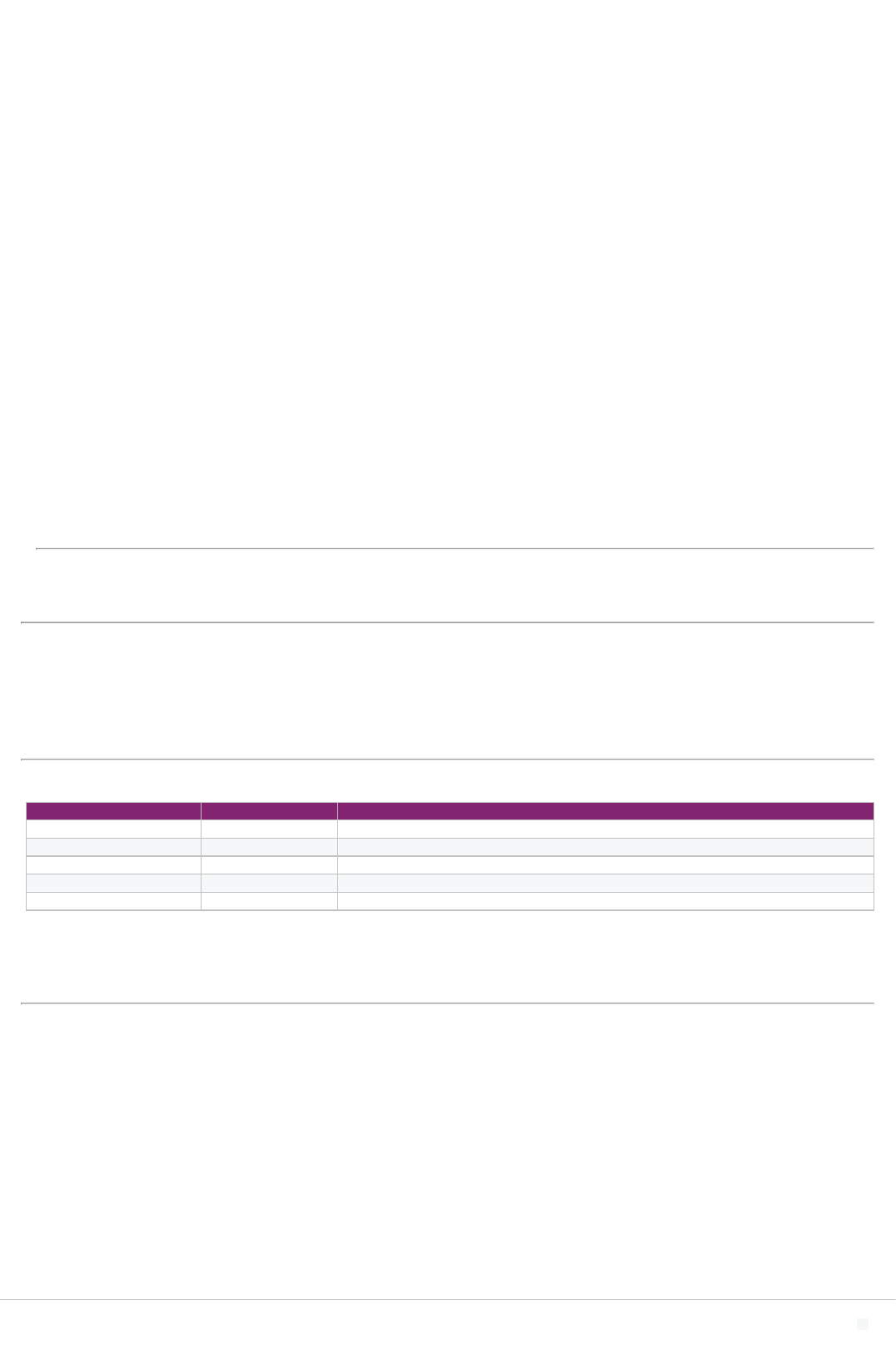
(C4.2c) Provide details of your net-zero target(s).
Target reference number
NZ1
Target coverage
Company-wide
Absolute/intensity emission target(s) linked to this net-zero target
Abs1
Abs2
Target year for achieving net zero
2040
Is this a science-based target?
Yes, we consider this a science-based target, and we have committed to seek validation of this target by the Science Based Targets initiative in the next two years
Please explain target coverage and identify any exclusions
We have pledged to achieve net-zero GHG emissions across our company-wide operations and value chain by 2040, which will align with the forthcoming net-zero targets
standard by the Science-Based Targets initiative. Our interim reduction targets to achieve this goal will cover emissions from our operations and value chain, including
Scope 1, Scope 2, and Scope 3 emissions as specified in the Science-Based Target guidelines for net-zero target-setting: specifically, 100% renewable energy sources to
power our data centers by 2023 (achieved in 2021), 25% reduction of absolute operational GHG emissions by 2025 from a 2019 base year, and 75% of our vendors by
spend adopting their own science-based targets by 2025.
Do you intend to neutralize any unabated emissions with permanent carbon removals at the target year?
Yes
Planned milestones and/or near-term investments for neutralization at target year
We believe we may need to neutralize unabated emissions across our value chain in 2040 when we aim to achieve net-zero emissions and in subsequent years until we are
able to abate all emissions. We continue to invest in climate impact projects that promote renewable energy and improve living standards for those with limited means. In
2022, we retired recent-vintage carbon credits representing 6,000 metric tons of avoided emissions from Project Shine in India. We also provided financial support for new
clean cookstove projects in Mexico and Guatemala, where credit verification and retirement are underway. While these carbon credits are not from projects that
demonstrate permanent carbon removal, we took this important step to demonstrate our commitment. We do not claim the carbon credit projects as investments for
neutralization at this time. We will continue to explore opportunities to engage in neutralization activities going forward.
Planned actions to mitigate emissions beyond your value chain (optional)
C4.3
(C4.3) Did you have emissions reduction initiatives that were active within the reporting year? Note that this can include those in the planning and/or
implementation phases.
Yes
C4.3a
(C4.3a) Identify the total number of initiatives at each stage of development, and for those in the implementation stages, the estimated CO2e savings.
Number of initiatives Total estimated annual CO2e savings in metric tonnes CO2e (only for rows marked *)
Under investigation 4
To be implemented* 0 0
Implementation commenced* 2 9800
Implemented* 2 2792
Not to be implemented 0
C4.3b
CDP Page of 6321

(C4.3b) Provide details on the initiatives implemented in the reporting year in the table below.
Initiative category & Initiative type
Low-carbon energy consumption Solar PV
Estimated annual CO2e savings (metric tonnes CO2e)
2447
Scope(s) or Scope 3 category(ies) where emissions savings occur
Scope 2 (market-based)
Voluntary/Mandatory
Voluntary
Annual monetary savings (unit currency – as specified in C0.4)
0
Investment required (unit currency – as specified in C0.4)
0
Payback period
No payback
Estimated lifetime of the initiative
6-10 years
Comment
Since 2021, we have matched 100% of the energy from our data center operations with renewable energy generation, two years ahead of our goal. Similar to our data
centers, we continue to focus on renewable energy procurement for our offices. In 2022, PayPal joined 100% renewable energy tariffs in San Jose, California and
Scottsdale, Arizona, U.S. supporting the greening of local power grids. Increased renewable energy purchases for our offices, combined with energy efficiency and
conservation actions in our global real estate portfolio, helps mitigate risk associated with energy price fluctuations while improving overall corporate efficiency. In total, we
procured approximately 9,800 MWh of renewable energy for these offices in 2022, covering 100% of the electricity consumed at these sites during the year, and expect to
realize approximately 2,447 MT CO2e in annual savings.
Initiative category & Initiative type
Energy efficiency in buildings Lighting
Estimated annual CO2e savings (metric tonnes CO2e)
345
Scope(s) or Scope 3 category(ies) where emissions savings occur
Scope 2 (market-based)
Voluntary/Mandatory
Voluntary
Annual monetary savings (unit currency – as specified in C0.4)
112000
Investment required (unit currency – as specified in C0.4)
575000
Payback period
4-10 years
Estimated lifetime of the initiative
6-10 years
Comment
We rely on purchased electricity for the operation of our offices globally. To reduce our energy use, we continued to further enhance our energy efficiency practices in our
offices in 2022 by concluding a series of high-efficiency LED lighting upgrades as part of planned global renovation and interior construction projects at 19 sites. The PayPal
facilities teams implemented 9,921 LED light fixtures upgrades globally across office sites in Asia, Europe, and North America. The resulting collective cost savings are
estimated at approximately USD $112,000 per year, with approximately 345 metric tons of annual CO2e savings.
C4.3c
(C4.3c) What methods do you use to drive investment in emissions reduction activities?
Method Comment
Financial
optimization
calculations
Our real estate and facilities team uses total lifecycle cost and simple payback analysis, as well as environmental sustainability considerations, to determine the financial feasibility of implementing
energy efficiency projects. In partnership with our Environmental Working Group, the facilities team continues to develop an energy management initiative aimed at identifying, evaluating, budgeting,
and implementing additional efficiency measures across our global office locations. For example, we have incorporated LED lighting as a standard for new build projects. In addition, our data centers
team requires that renewable energy options be incorporated into any new vendor relationships for leased data center space.
Employee
engagement
Our employees care deeply about the environment and volunteer their time and skills throughout the year to address sustainability issues. PayPal's Community Impact Teams sponsor teams of
passionate employees who focus on environmental sustainability and other causes in our offices and communities around the world. For example, in 2022, through a combination of grants and
employee volunteering with organizations such as the SankalpTaru Foundation in India, Keep Austin Beautiful in the U.S., One Tree Planted in Ireland, and United Way in Guatemala, PayPal
supported tree planting and ecosystem restoration efforts across North America, Europe, South America, and Asia. In addition, we partnered with Gold Standard Foundation to offer PayPal
employees the opportunity to purchase high-quality carbon credits, with PayPal matching those donations. Our Community Impact Teams also partner with the Environmental Working Group and our
real estate and facilities team to identify energy efficiency and renewable energy opportunities across our office locations.
CDP Page of 6322
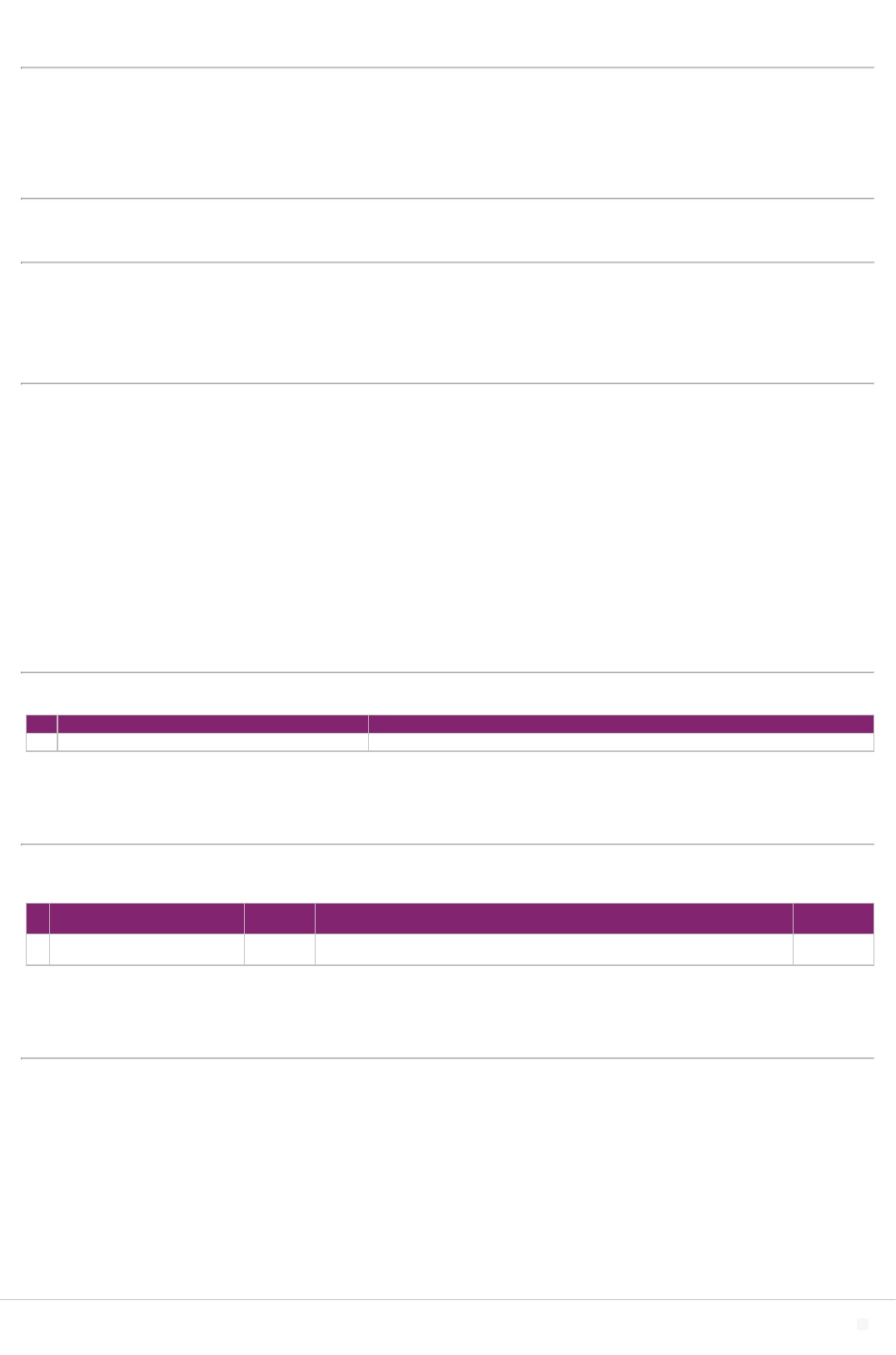
C4.5
(C4.5) Do you classify any of your existing goods and/or services as low-carbon products?
No
C5. Emissions methodology
C5.1
(C5.1) Is this your first year of reporting emissions data to CDP?
No
C5.1a
(C5.1a) Has your organization undergone any structural changes in the reporting year, or are any previous structural changes being accounted for in this
disclosure of emissions data?
Row 1
Has there been a structural change?
Yes, an acquisition
Name of organization(s) acquired, divested from, or merged with
In 2022 we incorporated PayPal's acquisitions of Happy Returns and GoPay business units into our organizational boundary.
Details of structural change(s), including completion dates
Happy Returns operates warehouse facilities in the continental United States. GoPay operations include colocated data center facilities in China. The energy and GHG
emissions associated with PayPal's operational control of these Happy Returns and GoPay facilities are included in our 2022 reporting.
C5.1b
(C5.1b) Has your emissions accounting methodology, boundary, and/or reporting year definition changed in the reporting year?
Change(s) in methodology, boundary, and/or reporting year definition? Details of methodology, boundary, and/or reporting year definition change(s)
Row 1 Yes, a change in boundary Our organizational boundary has expanded to include PayPal's acquisition of the Happy Returns and GoPay business units.
C5.1c
(C5.1c) Have your organization’s base year emissions and past years’ emissions been recalculated as a result of any changes or errors reported in C5.1a and/or
C5.1b?
Base year recalculation Scope(s)
recalculated
Base year emissions recalculation policy, including significance threshold Past years’
recalculation
Row
1
No, because the impact does not meet our
significance threshold
<Not
Applicable>
Base year emissions impact from the acquired operations did not meet our significance threshold of 5% for either
Scope 1 or Scope 2 (Market Based) emissions.
No
C5.2
(C5.2) Provide your base year and base year emissions.
Scope 1
Base year start
January 1 2019
Base year end
December 31 2019
Base year emissions (metric tons CO2e)
6509
Comment
CDP Page of 6323

Scope 2 (location-based)
Base year start
January 1 2019
Base year end
December 31 2019
Base year emissions (metric tons CO2e)
98921
Comment
As of 2021, we started calculating both the market-based and location-based methods of accounting for Scope 2 GHG emissions, consistent with the GHG Protocol
Corporate Standard's Scope 2 Guidance.
Scope 2 (market-based)
Base year start
January 1 2019
Base year end
December 31 2019
Base year emissions (metric tons CO2e)
46643
Comment
As of 2021, we started calculating both the market-based and location-based methods of accounting for Scope 2 GHG emissions, consistent with the GHG Protocol
Corporate Standard's Scope 2 Guidance.
Scope 3 category 1: Purchased goods and services
Base year start
January 1 2021
Base year end
December 31 2021
Base year emissions (metric tons CO2e)
446000
Comment
We developed a spend-based Economically Extended Input-Output (EEIO) model based on the US EPA Supply Chain Emission Factors to estimate Scope 3 emissions
from Purchased Goods and Services. Our 2021 purchased goods and services also includes estimated Scope 3 emissions associated with PayPal's consumer
cryptocurrency buy-sell-hold services. The 2021 value includes cryptocurrency-related emissions, which are estimated using 2021 activity data and the Hybrid Emissions
Allocation Method as presented in the "Accounting for Cryptocurrency Climate Impacts" guidance published by Crypto Carbon Rating Institute and South Pole in 2022.
Scope 3 spend based emissions categories are rounded to the nearest 1000 metric tons CO2e to reflect limitations in the underlying data sources and estimation
methodologies.
Scope 3 category 2: Capital goods
Base year start
January 1 2021
Base year end
December 31 2021
Base year emissions (metric tons CO2e)
46000
Comment
We developed a spend-based Economically Extended Input-Output (EEIO) model based on the US EPA Supply Chain Emission Factors to estimate Scope 3 emissions
from Capital Goods. Scope 3 spend based emissions categories are rounded to the nearest 1000 metric tons CO2e to reflect limitations in the underlying data sources and
estimation methodologies.
Scope 3 category 3: Fuel-and-energy-related activities (not included in Scope 1 or 2)
Base year start
January 1 2019
Base year end
December 31 2019
Base year emissions (metric tons CO2e)
27400
Comment
Fuel & Energy related activities - MBM- CO2e
CDP Page of 6324

Scope 3 category 4: Upstream transportation and distribution
Base year start
January 1 2021
Base year end
December 31 2021
Base year emissions (metric tons CO2e)
1000
Comment
We developed a spend-based Economically Extended Input-Output (EEIO) model based on the US EPA Supply Chain Emission Factors to estimate Scope 3 emissions
from Upstream Transportation and Distribution. Scope 3 spend based emissions categories are rounded to the nearest 1000 metric tons CO2e to reflect limitations in the
underlying data sources and estimation methodologies.
Scope 3 category 5: Waste generated in operations
Base year start
January 1 2021
Base year end
December 31 2021
Base year emissions (metric tons CO2e)
Comment
We have conducted a Scope 3 screening of waste generated in operations and determined that this emissions category is relevant to PayPal. We have included waste
generated in operations in our preliminary estimation of Scope 3 emissions from purchased goods and services, as described above.
Scope 3 category 6: Business travel
Base year start
January 1 2019
Base year end
December 31 2019
Base year emissions (metric tons CO2e)
32100
Comment
Business travel Scope 3 emissions were calculated in accordance with the GHG Protocol's Corporate Value Chain (Scope 3) Accounting and Reporting Standard.
Following DEFRA's 2021 guidance accompanying its conversion factors, air mileage is categorized by short, medium and long-haul distances (i.e., <300 miles, between
300 and <2,300 miles or equal or >2,300 miles, respectively). Flights were also categorized by seat class (i.e., business, first, premium economy, economy and average).
Appropriate DEFRA Conversion Factors for Business Travel are applied to each distance type to calculate MT CO2e for air travel emissions.
Scope 3 category 7: Employee commuting
Base year start
January 1 2021
Base year end
December 31 2021
Base year emissions (metric tons CO2e)
18732
Comment
For calculating the emissions associated with employee commute and remote working, two different sub-categories were considered:
Employee commuting emissions are estimated using average monthly office attendance data, employee transportation survey data, and U.S. EPA transportation mode
emissions factors and are limited by data availability. Employee remote working emissions are estimated using average monthly remote working data and the remote
working emissions methodology published by Anthesis Group in the Estimating Energy Consumption and GHG Emissions for Remote Workers white paper. We will
periodically review publicly available methodologies and evaluate opportunities to enhance the quality and quantity of data available for estimating employee commuting
and remote working emissions.
Scope 3 category 8: Upstream leased assets
Base year start
Base year end
Base year emissions (metric tons CO2e)
Comment
We have quantified emissions associated with upstream leased assets, including leased facilities, within our Scope 1 and Scope 2 inventory. PayPal does not have any
other upstream leased assets that are not captured in the Scope 1 and Scope 2 inventory.
Scope 3 category 9: Downstream transportation and distribution
Base year start
Base year end
Base year emissions (metric tons CO2e)
Comment
As a Software and Services business, substantially all of PayPal's products and services are digital. We have conducted an assessment of PayPal's physical products and
determined that emissions from downstream transportation and distribution are not relevant or material under any of the criteria in the Scope 3 Standard.
CDP Page of 6325

Scope 3 category 10: Processing of sold products
Base year start
Base year end
Base year emissions (metric tons CO2e)
Comment
As a Software and Services business, substantially all of PayPal's products and services are digital. We have conducted an assessment of physical products and
determined that emissions from the processing of sold products is not relevant or material under the Scope 3 Standard.
Scope 3 category 11: Use of sold products
Base year start
Base year end
Base year emissions (metric tons CO2e)
Comment
Emissions from use of sold products are negligible (<1 % of scope 3 emissions). This category is not relevant under any of the criteria in the Scope 3 Standard.
Scope 3 category 12: End of life treatment of sold products
Base year start
Base year end
Base year emissions (metric tons CO2e)
Comment
As a Software and Services business, substantially all of PayPal's products and services are digital. We have completed an assessment of PayPal's physical products and
determined that emissions from end-of-life treatment is not relevant under any of the criteria in the Scope 3 Standard.
Scope 3 category 13: Downstream leased assets
Base year start
Base year end
Base year emissions (metric tons CO2e)
Comment
PayPal does not have any downstream leased assets.
Scope 3 category 14: Franchises
Base year start
Base year end
Base year emissions (metric tons CO2e)
Comment
PayPal does not have any franchises.
Scope 3 category 15: Investments
Base year start
Base year end
Base year emissions (metric tons CO2e)
Comment
PayPal's business is the enablement of digital payments. As such, investing is not a significant part of our business and is not relevant under any criteria in the Scope 3
Standard.
Scope 3: Other (upstream)
Base year start
Base year end
Base year emissions (metric tons CO2e)
Comment
Not relevant to PayPal.
Scope 3: Other (downstream)
Base year start
Base year end
Base year emissions (metric tons CO2e)
Comment
Not relevant to PayPal.
C5.3
CDP Page of 6326

(C5.3) Select the name of the standard, protocol, or methodology you have used to collect activity data and calculate emissions.
The Greenhouse Gas Protocol: A Corporate Accounting and Reporting Standard (Revised Edition)
The Greenhouse Gas Protocol: Scope 2 Guidance
The Greenhouse Gas Protocol: Corporate Value Chain (Scope 3) Standard
C6. Emissions data
C6.1
(C6.1) What were your organization’s gross global Scope 1 emissions in metric tons CO2e?
Reporting year
Gross global Scope 1 emissions (metric tons CO2e)
3859
Start date
<Not Applicable>
End date
<Not Applicable>
Comment
C6.2
(C6.2) Describe your organization’s approach to reporting Scope 2 emissions.
Row 1
Scope 2, location-based
We are reporting a Scope 2, location-based figure
Scope 2, market-based
We are reporting a Scope 2, market-based figure
Comment
As of 2021, we started calculating both the market-based and location-based methods of accounting for Scope 2 GHG emissions, consistent with the GHG Protocol
Corporate Standard's Scope 2 Guidance.
C6.3
(C6.3) What were your organization’s gross global Scope 2 emissions in metric tons CO2e?
Reporting year
Scope 2, location-based
101454
Scope 2, market-based (if applicable)
6738
Start date
<Not Applicable>
End date
<Not Applicable>
Comment
C6.4
(C6.4) Are there any sources (e.g. facilities, specific GHGs, activities, geographies, etc.) of Scope 1, Scope 2 or Scope 3 emissions that are within your selected
reporting boundary which are not included in your disclosure?
No
C6.5
(C6.5) Account for your organization’s gross global Scope 3 emissions, disclosing and explaining any exclusions.
CDP Page of 6327

Purchased goods and services
Evaluation status
Relevant, calculated
Emissions in reporting year (metric tons CO2e)
448000
Emissions calculation methodology
Hybrid method
Percentage of emissions calculated using data obtained from suppliers or value chain partners
15.1
Please explain
We developed a spend-based Economically Extended Input-Output (EEIO) model based on the US EPA Supply Chain Emission Factors to estimate Scope 3 emissions
from Purchased Goods and Services. Our 2022 purchased goods and services also includes estimated Scope 3 emissions associated with PayPal's consumer
cryptocurrency buy-sell-hold services. Cryptocurrency-related emissions are estimated using 2022 activity data and the Hybrid Emissions Allocation Method as presented in
the "Accounting for Cryptocurrency Climate Impacts" guidance published by Crypto Carbon Rating Institute and South Pole in 2022.
Capital goods
Evaluation status
Relevant, calculated
Emissions in reporting year (metric tons CO2e)
16000
Emissions calculation methodology
Spend-based method
Percentage of emissions calculated using data obtained from suppliers or value chain partners
0
Please explain
We developed a spend-based Economically Extended Input-Output (EEIO) model based on the US EPA Supply Chain Emission Factors to estimate Scope 3 emissions
from Capital Goods.
Fuel-and-energy-related activities (not included in Scope 1 or 2)
Evaluation status
Relevant, calculated
Emissions in reporting year (metric tons CO2e)
8800
Emissions calculation methodology
Supplier-specific method
Average data method
Percentage of emissions calculated using data obtained from suppliers or value chain partners
100
Please explain
Emissions were calculated for fuel-and-energy-related activities (not included in Scope 1 or 2) by totaling activity data for each Scope 1 fuel type and electricity consumption
by country. These totals were multiplied by their relevant emission factors as appropriate: 2021 International Energy Agency emission factors, 2022 AIB Residual Mix
emission factors and UK DEFRA / BEIS Conversion Factors for Company Reporting. Only activities B and C (i.e., upstream emission of purchased electricity and
transmission and distribution losses) are included in the calculations.
Upstream transportation and distribution
Evaluation status
Relevant, calculated
Emissions in reporting year (metric tons CO2e)
11000
Emissions calculation methodology
Spend-based method
Percentage of emissions calculated using data obtained from suppliers or value chain partners
0
Please explain
We developed a spend-based Economically Extended Input-Output (EEIO) model based on the US EPA Supply Chain Emission Factors to estimate Scope 3 emissions
from Upstream Transportation and Distribution.
CDP Page of 6328

Waste generated in operations
Evaluation status
Relevant, not yet calculated
Emissions in reporting year (metric tons CO2e)
<Not Applicable>
Emissions calculation methodology
<Not Applicable>
Percentage of emissions calculated using data obtained from suppliers or value chain partners
<Not Applicable>
Please explain
We conducted a Scope 3 screening of waste generated in operations and determined that this emissions category is relevant to PayPal. We have included waste
generated in operations within our preliminary estimation of Scope 3 emissions from purchased goods and services, as described above. As part of our Science-Based
Targets, established in April 2021, we have set a vendor engagement target for 75% of our vendors (by spend) to adopt their own science-based climate targets by 2025.
This vendor engagement target covers Scope 3 emissions from waste generation. We believe that engaging vendors to set their own climate targets is the most effective
means to address Scope 3 emissions from this category. In 2021, we rolled out a vendor engagement initiative with CDP Supply Chain to mobilize vendor climate efforts by
collecting climate impact data, providing technical support and collaborating with vendors, peers, and supply chain sustainability experts. We are working to refine our
approach to measuring emissions from waste generated in operations and will re-assess disclosure in future years.
Business travel
Evaluation status
Relevant, calculated
Emissions in reporting year (metric tons CO2e)
6170
Emissions calculation methodology
Distance-based method
Percentage of emissions calculated using data obtained from suppliers or value chain partners
100
Please explain
Business travel Scope 3 emissions were calculated in accordance with the GHG Protocol's Corporate Value Chain (Scope 3) Accounting and Reporting Standard.
Following DEFRA's 2021 guidance accompanying its conversion factors, air mileage is categorized by short, medium and long-haul distances (i.e., <300 miles, between
300 and <2,300 miles or equal or >2,300 miles, respectively). Flights were also categorized by seat class (i.e., business, first, premium economy, economy and average).
Appropriate DEFRA Conversion Factors for Business Travel are applied to each distance type to calculate MT CO2e for air travel emissions.
All travel data were summed and multiplied by relevant DEFRA Emission Factors to calculate MT CO2e. Resultant travel emissions are summed to provide a total for
Business Travel emissions. Specifics on each business travel data aspect is detailed below:
• Air Travel Emissions: [(short haul selected class air mileage * DEFRA 2021 short haul selected class emission factor) + (medium haul selected class air mileage * DEFRA
2021 medium haul selected class emission factor) + (long haul selected class air mileage * DEFRA 2021 long haul selected class emission factor)]
• Employee Mileage Emissions: (vehicle-miles reimbursed * Passenger car vehicle-miles emission factor)
• Public Transit Emissions: [(bus passenger miles * DEFRA 2021 bus passenger miles emission factor) + (intercity rail passenger miles * DEFRA 2021 intercity rail
passenger miles emission factor) + (ferry passenger miles * DEFRA 2021 ferry passenger miles emission factor)]
• Rental Cars Emissions: (rental car gasoline consumed * DEFRA 2021 gasoline consumption emission factor)
• Hotel Stay Emissions: (number of hotel night within specific region * DEFRA 2021 emission factor per night by country)
Employee commuting
Evaluation status
Relevant, calculated
Emissions in reporting year (metric tons CO2e)
17028
Emissions calculation methodology
Distance-based method
Site-specific method
Percentage of emissions calculated using data obtained from suppliers or value chain partners
0
Please explain
For calculating the emissions associated with employee commute and remote working, two different sub-categories were considered:
Employee Commuting: average emissions associated with employee commute for 11 direct competitors (mainly fintech and IT companies) were used to calculate the
emissions per employee. A 10% markup was added to that average. This factor was then multiplied by the total number of the employees who visited the office between
January and December 2022 (based on the number of card swipes in various offices).
Remote Working: the number of employees working from home and the country-specific Incremental Remote Working Energy Intensity uses country specific IEA data on
energy consumption for the baseline energy intensity and the regional ratio of incremental energy intensity to determine the country specific incremental energy increases
due to remote work were used to calculate the emissions.
CDP Page of 6329

Upstream leased assets
Evaluation status
Not relevant, explanation provided
Emissions in reporting year (metric tons CO2e)
<Not Applicable>
Emissions calculation methodology
<Not Applicable>
Percentage of emissions calculated using data obtained from suppliers or value chain partners
<Not Applicable>
Please explain
We have quantified emissions associated with upstream leased assets, including leased facilities, within our Scope 1 and Scope 2 inventory. PayPal does not have any
other upstream leased assets that are not captured in the Scope 1 and Scope 2 inventory.
Downstream transportation and distribution
Evaluation status
Not relevant, explanation provided
Emissions in reporting year (metric tons CO2e)
<Not Applicable>
Emissions calculation methodology
<Not Applicable>
Percentage of emissions calculated using data obtained from suppliers or value chain partners
<Not Applicable>
Please explain
As a Software and Services business, substantially all of PayPal's products and services are digital. We have conducted an assessment of PayPal's physical products and
determined that emissions from downstream transportation and distribution are not relevant or material under any of the criteria in the Scope 3 Standard.
Processing of sold products
Evaluation status
Not relevant, explanation provided
Emissions in reporting year (metric tons CO2e)
<Not Applicable>
Emissions calculation methodology
<Not Applicable>
Percentage of emissions calculated using data obtained from suppliers or value chain partners
<Not Applicable>
Please explain
As a Software and Services business, substantially all of PayPal's products and services are digital. We have conducted an assessment of physical products and
determined that emissions from the processing of sold products is not relevant or material under the Scope 3 Standard.
Use of sold products
Evaluation status
Not relevant, explanation provided
Emissions in reporting year (metric tons CO2e)
<Not Applicable>
Emissions calculation methodology
<Not Applicable>
Percentage of emissions calculated using data obtained from suppliers or value chain partners
<Not Applicable>
Please explain
Emissions from use of sold products are negligible (<1 % of scope 3 emissions). This category is not relevant under any of the criteria in the Scope 3 Standard.
End of life treatment of sold products
Evaluation status
Not relevant, explanation provided
Emissions in reporting year (metric tons CO2e)
<Not Applicable>
Emissions calculation methodology
<Not Applicable>
Percentage of emissions calculated using data obtained from suppliers or value chain partners
<Not Applicable>
Please explain
As a Software and Services business, substantially all of PayPal's products and services are digital. We have completed an assessment of PayPal's physical products and
determined that emissions from end-of-life treatment is not relevant under any of the criteria in the Scope 3 Standard.
CDP Page of 6330

Downstream leased assets
Evaluation status
Not relevant, explanation provided
Emissions in reporting year (metric tons CO2e)
<Not Applicable>
Emissions calculation methodology
<Not Applicable>
Percentage of emissions calculated using data obtained from suppliers or value chain partners
<Not Applicable>
Please explain
PayPal does not have any downstream leased assets.
Franchises
Evaluation status
Not relevant, explanation provided
Emissions in reporting year (metric tons CO2e)
<Not Applicable>
Emissions calculation methodology
<Not Applicable>
Percentage of emissions calculated using data obtained from suppliers or value chain partners
<Not Applicable>
Please explain
PayPal does not have any franchises
Investments
Evaluation status
Not relevant, explanation provided
Emissions in reporting year (metric tons CO2e)
<Not Applicable>
Emissions calculation methodology
<Not Applicable>
Percentage of emissions calculated using data obtained from suppliers or value chain partners
<Not Applicable>
Please explain
PayPal's business is the enablement of digital payments. As such, investing is not a significant part of our business and is not relevant under any criteria in the Scope 3
Standard.
Other (upstream)
Evaluation status
Not relevant, explanation provided
Emissions in reporting year (metric tons CO2e)
<Not Applicable>
Emissions calculation methodology
<Not Applicable>
Percentage of emissions calculated using data obtained from suppliers or value chain partners
<Not Applicable>
Please explain
Not relevant to PayPal.
Other (downstream)
Evaluation status
Not relevant, explanation provided
Emissions in reporting year (metric tons CO2e)
<Not Applicable>
Emissions calculation methodology
<Not Applicable>
Percentage of emissions calculated using data obtained from suppliers or value chain partners
<Not Applicable>
Please explain
Not relevant to PayPal.
C6.7
CDP Page of 6331

(C6.7) Are carbon dioxide emissions from biogenic carbon relevant to your organization?
No
C6.10
(C6.10) Describe your gross global combined Scope 1 and 2 emissions for the reporting year in metric tons CO2e per unit currency total revenue and provide any
additional intensity metrics that are appropriate to your business operations.
Intensity figure
3.851e-7
Metric numerator (Gross global combined Scope 1 and 2 emissions, metric tons CO2e)
10597
Metric denominator
unit total revenue
Metric denominator: Unit total
27518000000
Scope 2 figure used
Market-based
% change from previous year
31.69
Direction of change
Decreased
Reason(s) for change
Change in renewable energy consumption
Please explain
Annual Scope 1 and 2 GHG emissions decreased by approximately 26% year over year, while revenue increased by approximately 8%. The reduction in total Scope 1 and
Scope 2 emissions was driven primarily by the sustained growth of PayPal's renewable energy procurement.
Intensity figure
0.3576544043
Metric numerator (Gross global combined Scope 1 and 2 emissions, metric tons CO2e)
10597
Metric denominator
full time equivalent (FTE) employee
Metric denominator: Unit total
29630
Scope 2 figure used
Market-based
% change from previous year
22.73
Direction of change
Decreased
Reason(s) for change
Change in renewable energy consumption
Please explain
While the number of full time equivalent (FTE) employees decreased by approximately 4%, annual Scope 1 and 2 GHG emissions decreased by approximately 26%. The
reduction in total emissions was driven primarily by the sustained growth of PayPal's renewable energy procurement.
Intensity figure
0.0021837326
Metric numerator (Gross global combined Scope 1 and 2 emissions, metric tons CO2e)
10597
Metric denominator
square foot
Metric denominator: Unit total
4852838
Scope 2 figure used
Market-based
% change from previous year
26.7
Direction of change
Decreased
Reason(s) for change
Change in renewable energy consumption
CDP Page of 6332
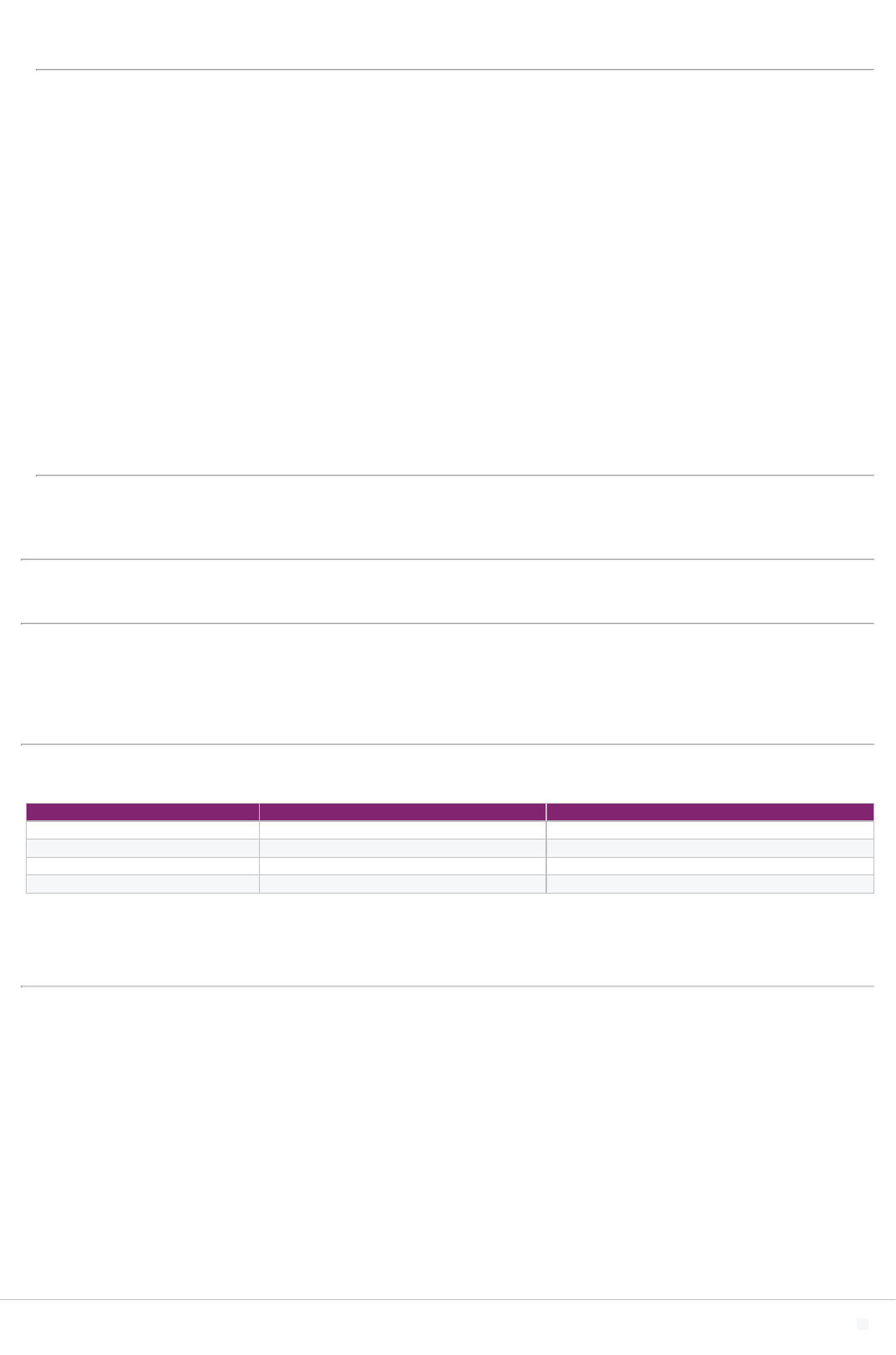
Please explain
PayPal's global real estate portfolio square footage increased by 1% while annual Scope 1 and 2 GHG emissions decreased by approximately 26%. The reduction in total
emissions was driven primarily by the sustained growth of PayPal's renewable energy procurement in 2022.
Intensity figure
0.474173341
Metric numerator (Gross global combined Scope 1 and 2 emissions, metric tons CO2e)
10597
Metric denominator
Other, please specify (Number of payment transactions (millions))
Metric denominator: Unit total
22349
Scope 2 figure used
Market-based
% change from previous year
36
Direction of change
Decreased
Reason(s) for change
Change in renewable energy consumption
Please explain
While PayPal's number of payment transactions increased by 16%, annual Scope 1 and 2 GHG emissions decreased by approximately 26%. The reduction in total
emissions was driven primarily by the sustained growth of PayPal's renewable energy procurement.
C7. Emissions breakdowns
C7.1
(C7.1) Does your organization break down its Scope 1 emissions by greenhouse gas type?
Yes
C7.1a
(C7.1a) Break down your total gross global Scope 1 emissions by greenhouse gas type and provide the source of each used greenhouse warming potential
(GWP).
Greenhouse gas Scope 1 emissions (metric tons of CO2e) GWP Reference
CO2 3056.88 IPCC Fifth Assessment Report (AR5 – 100 year)
CH4 1.09 IPCC Fifth Assessment Report (AR5 – 100 year)
N2O 11.02 IPCC Fifth Assessment Report (AR5 – 100 year)
Other, please specify (Refrigerants) 789.8 IPCC Fourth Assessment Report (AR4 - 100 year)
C7.2
CDP Page of 6333
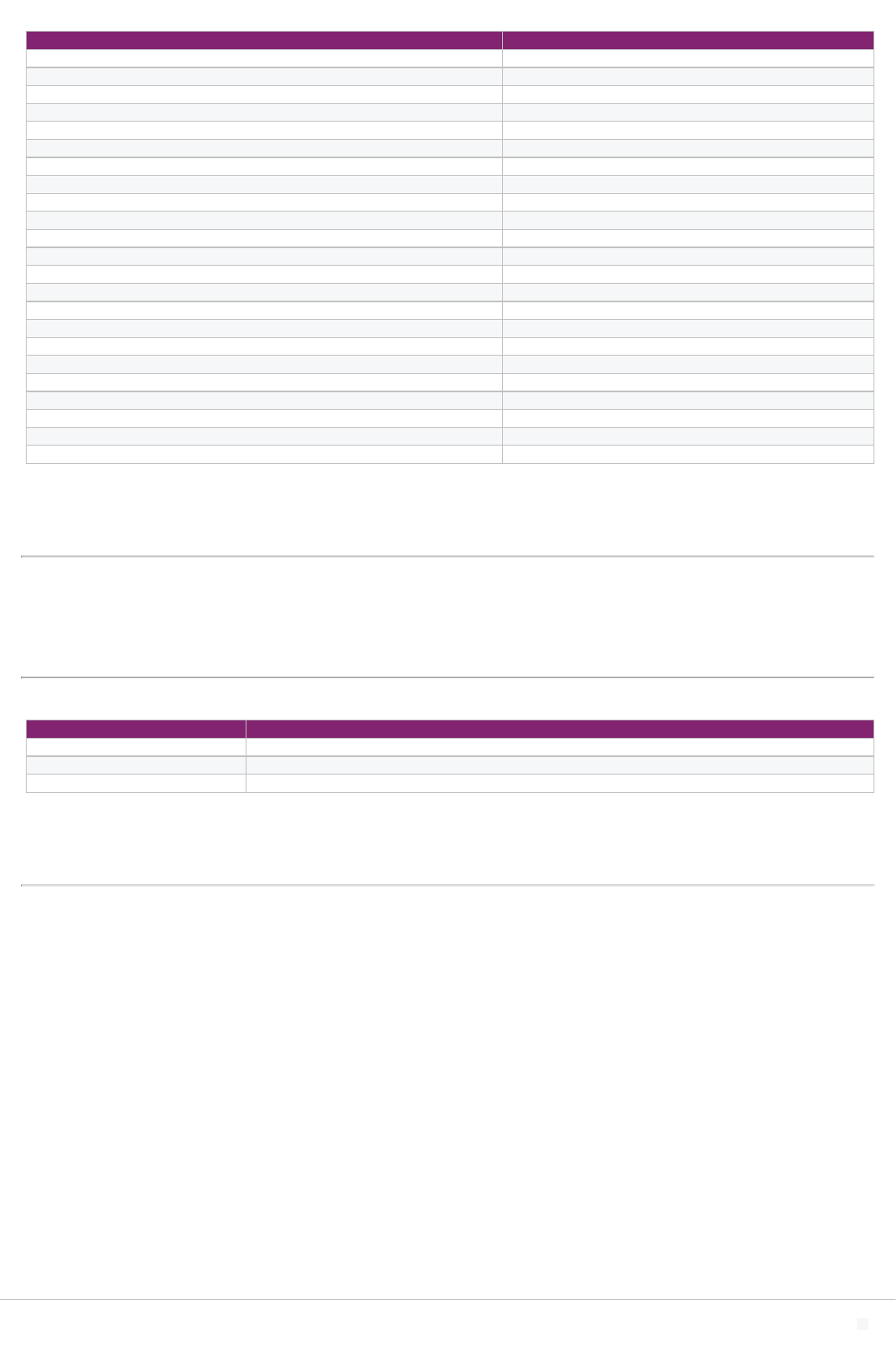
(C7.2) Break down your total gross global Scope 1 emissions by country/area/region.
Country/area/region Scope 1 emissions (metric tons CO2e)
Brazil 0
Canada 0
Guatemala 13.4
Mexico 0
United States of America 3093.01
China 1.75
Hong Kong SAR, China 183.43
India 0
Israel 0
Japan 0
Philippines 0
Singapore 0
France 0
Germany 0
Ireland 567.21
Italy 0
Luxembourg 0
Poland 0
Russian Federation 0
Spain 0
Sweden 0
United Kingdom of Great Britain and Northern Ireland 0
Australia 0
C7.3
(C7.3) Indicate which gross global Scope 1 emissions breakdowns you are able to provide.
By activity
C7.3c
(C7.3c) Break down your total gross global Scope 1 emissions by business activity.
Activity Scope 1 emissions (metric tons CO2e)
Facilities 2647.45
Corporate Jet 1211.35
Data Centers 0
C7.5
CDP Page of 6334
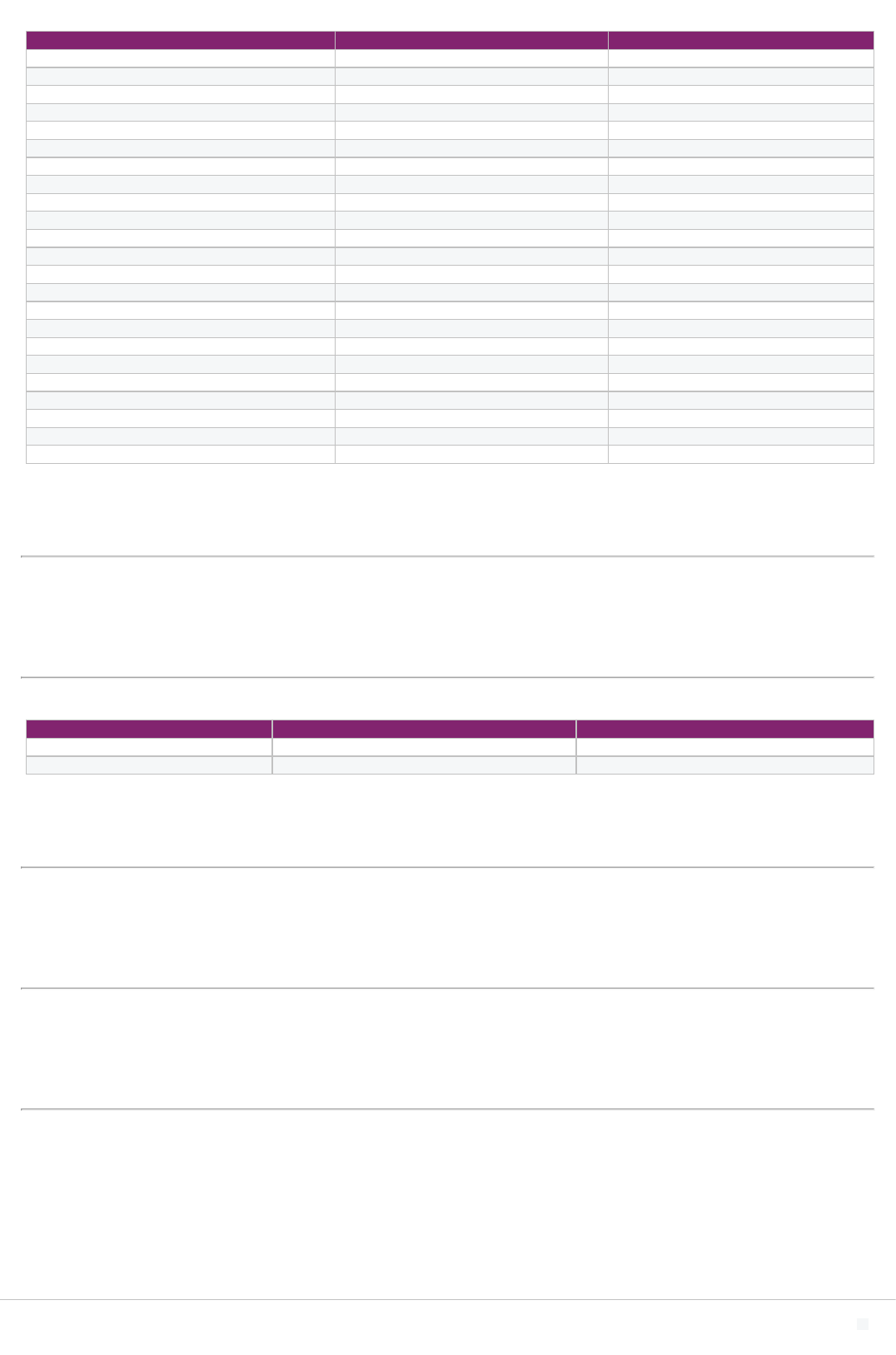
(C7.5) Break down your total gross global Scope 2 emissions by country/area/region.
Country/area/region Scope 2, location-based (metric tons CO2e) Scope 2, market-based (metric tons CO2e)
Brazil 18.57 18.57
Canada 90.99 0
Guatemala 113.35 113.35
Mexico 92.19 92.19
United States of America 84012.03 0
China 8848.85 0
Hong Kong SAR, China 51.81 51.81
India 3214.83 3214.83
Israel 338.97 338.97
Japan 74.93 74.93
Philippines 1875.56 1875.56
France 9.14 9.99
Germany 122.83 70.32
Ireland 1851.26 162.5
Italy 36.87 59.23
Luxembourg 35.15 20.96
Poland 5.97 7.17
Russian Federation 31.28 31.28
Spain 13.02 14.21
Sweden 21.68 38.95
United Kingdom of Great Britain and Northern Ireland 228.49 177.66
Australia 143.98 143.98
Singapore 222.04 222.04
C7.6
(C7.6) Indicate which gross global Scope 2 emissions breakdowns you are able to provide.
By activity
C7.6c
(C7.6c) Break down your total gross global Scope 2 emissions by business activity.
Activity Scope 2, location-based (metric tons CO2e) Scope 2, market-based (metric tons CO2e)
Consumption of Purchased Electricity 100717.14 6001.88
Consumption of Purchased Steam 736.61 736.61
C7.7
(C7.7) Is your organization able to break down your emissions data for any of the subsidiaries included in your CDP response?
Not relevant as we do not have any subsidiaries
C7.9
(C7.9) How do your gross global emissions (Scope 1 and 2 combined) for the reporting year compare to those of the previous reporting year?
Decreased
C7.9a
CDP Page of 6335
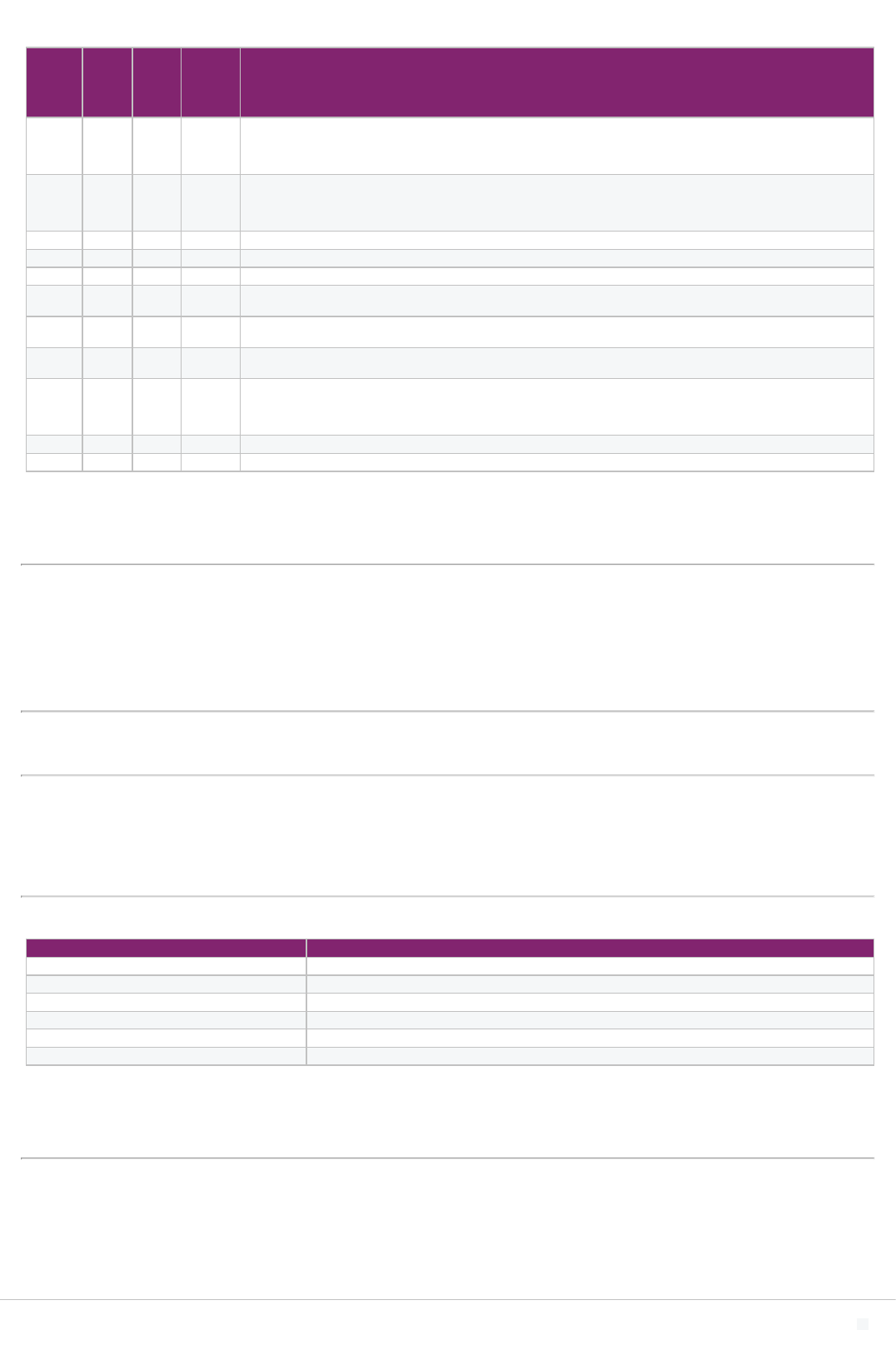
(C7.9a) Identify the reasons for any change in your gross global emissions (Scope 1 and 2 combined), and for each of them specify how your emissions compare
to the previous year.
Change in
emissions
(metric
tons
CO2e)
Direction
of change
in
emissions
Emissions
value
(percentage)
Please explain calculation
Change in
renewable
energy
consumption
3704.97 Decreased 25.0948 Total renewable energy purchases in 2022 were 234,820 MWh versus 225,800 MWh in the prior year. This increase in renewable energy purchases and
application resulted in a 3,704.97 MT CO2e decrease in our Scope 2 MBM emissions in 2022, relative to 2021. This represented a 25.09% decrease in total
Scope 1 and Scope 2 MBM emissions in 2022, relative to 2021. This calculation is as follows: (3704.97 [2022 Scope 1+ Scope 2 MBM reduction from
renewable energy procurement] / 14,302.27 [2021 combined Scope 1 and Scope 2 MBM emissions ) x 100 = 25.0948%.
Other
emissions
reduction
activities
0 No change 0 We did not have any additional emissions reduction initiatives in the reporting year.
Divestment 0 No change 0 There was no change in gross global Scope 1 and Scope 2 emissions due to divestment
Acquisitions 0 No change 0 There was no change in gross global Scope 1 and Scope 2 emissions due to acquisitions
Mergers 0 No change 0 There was no change in gross global Scope 1 and Scope 2 emissions due to mergers.
Change in
output
0 No change 0 There was no change in gross global Scope 1 and Scope 2 emissions due to change in output.
Change in
methodology
0 No change 0 There was no change in gross global Scope 1 and Scope 2 emissions due to change in methodology.
Change in
boundary
0 No change 0 There was no change in gross global Scope 1 and Scope 2 emissions due to change in boundary.
Change in
physical
operating
conditions
0 No change 0 There was no change in gross global Scope 1 and Scope 2 emissions due to change in physical operating conditions.
Unidentified 0 No change 0 There was no change in gross global Scope 1 and Scope 2 emissions due to unidentified activities.
Other 0 No change 0 There was no change in gross global Scope 1 and Scope 2 emissions due to other activities.
C7.9b
(C7.9b) Are your emissions performance calculations in C7.9 and C7.9a based on a location-based Scope 2 emissions figure or a market-based Scope 2
emissions figure?
Market-based
C8. Energy
C8.1
(C8.1) What percentage of your total operational spend in the reporting year was on energy?
More than 0% but less than or equal to 5%
C8.2
(C8.2) Select which energy-related activities your organization has undertaken.
Indicate whether your organization undertook this energy-related activity in the reporting year
Consumption of fuel (excluding feedstocks) Yes
Consumption of purchased or acquired electricity Yes
Consumption of purchased or acquired heat No
Consumption of purchased or acquired steam Yes
Consumption of purchased or acquired cooling No
Generation of electricity, heat, steam, or cooling Yes
C8.2a
CDP Page of 6336

(C8.2a) Report your organization’s energy consumption totals (excluding feedstocks) in MWh.
Heating value MWh from renewable sources MWh from non-renewable sources Total (renewable and non-renewable) MWh
Consumption of fuel (excluding feedstock) HHV (higher heating value) 0 14821.98 14821.98
Consumption of purchased or acquired electricity <Not Applicable> 234234.27 11782.23 246016.5
Consumption of purchased or acquired heat <Not Applicable> <Not Applicable> <Not Applicable> <Not Applicable>
Consumption of purchased or acquired steam <Not Applicable> 0 3251.66 3251.66
Consumption of purchased or acquired cooling <Not Applicable> <Not Applicable> <Not Applicable> <Not Applicable>
Consumption of self-generated non-fuel renewable energy <Not Applicable> 645.56 <Not Applicable> 645.56
Total energy consumption <Not Applicable> 234879.83 29855.87 264735.7
C8.2b
(C8.2b) Select the applications of your organization’s consumption of fuel.
Indicate whether your organization undertakes this fuel application
Consumption of fuel for the generation of electricity Yes
Consumption of fuel for the generation of heat Yes
Consumption of fuel for the generation of steam No
Consumption of fuel for the generation of cooling No
Consumption of fuel for co-generation or tri-generation No
C8.2c
(C8.2c) State how much fuel in MWh your organization has consumed (excluding feedstocks) by fuel type.
Sustainable biomass
Heating value
HHV
Total fuel MWh consumed by the organization
0
MWh fuel consumed for self-generation of electricity
0
MWh fuel consumed for self-generation of heat
0
MWh fuel consumed for self-generation of steam
<Not Applicable>
MWh fuel consumed for self-generation of cooling
<Not Applicable>
MWh fuel consumed for self- cogeneration or self-trigeneration
<Not Applicable>
Comment
Other biomass
Heating value
HHV
Total fuel MWh consumed by the organization
0
MWh fuel consumed for self-generation of electricity
0
MWh fuel consumed for self-generation of heat
0
MWh fuel consumed for self-generation of steam
<Not Applicable>
MWh fuel consumed for self-generation of cooling
<Not Applicable>
MWh fuel consumed for self- cogeneration or self-trigeneration
<Not Applicable>
Comment
CDP Page of 6337

Other renewable fuels (e.g. renewable hydrogen)
Heating value
HHV
Total fuel MWh consumed by the organization
0
MWh fuel consumed for self-generation of electricity
0
MWh fuel consumed for self-generation of heat
0
MWh fuel consumed for self-generation of steam
<Not Applicable>
MWh fuel consumed for self-generation of cooling
<Not Applicable>
MWh fuel consumed for self- cogeneration or self-trigeneration
<Not Applicable>
Comment
Coal
Heating value
HHV
Total fuel MWh consumed by the organization
0
MWh fuel consumed for self-generation of electricity
0
MWh fuel consumed for self-generation of heat
0
MWh fuel consumed for self-generation of steam
<Not Applicable>
MWh fuel consumed for self-generation of cooling
<Not Applicable>
MWh fuel consumed for self- cogeneration or self-trigeneration
<Not Applicable>
Comment
Oil
Heating value
HHV
Total fuel MWh consumed by the organization
0
MWh fuel consumed for self-generation of electricity
0
MWh fuel consumed for self-generation of heat
0
MWh fuel consumed for self-generation of steam
<Not Applicable>
MWh fuel consumed for self-generation of cooling
<Not Applicable>
MWh fuel consumed for self- cogeneration or self-trigeneration
<Not Applicable>
Comment
CDP Page of 6338

Gas
Heating value
HHV
Total fuel MWh consumed by the organization
9187.91
MWh fuel consumed for self-generation of electricity
0
MWh fuel consumed for self-generation of heat
9187.91
MWh fuel consumed for self-generation of steam
<Not Applicable>
MWh fuel consumed for self-generation of cooling
<Not Applicable>
MWh fuel consumed for self- cogeneration or self-trigeneration
<Not Applicable>
Comment
US EPA GHG Emission Factors for Greenhouse Inventories, April 1, 2021 https://www.epa.gov/sites/default/files/2021-04/documents/emission-factors_apr2021.pdf
Other non-renewable fuels (e.g. non-renewable hydrogen)
Heating value
HHV
Total fuel MWh consumed by the organization
5634.07
MWh fuel consumed for self-generation of electricity
758.28
MWh fuel consumed for self-generation of heat
0
MWh fuel consumed for self-generation of steam
<Not Applicable>
MWh fuel consumed for self-generation of cooling
<Not Applicable>
MWh fuel consumed for self- cogeneration or self-trigeneration
<Not Applicable>
Comment
Consumption of Jet Kerosene for aviation and other non-renewable fuels including diesel and fuel oil for electricity generation. US EPA GHG Emission Factors for
Greenhouse Inventories, April 1, 2021 https://www.epa.gov/sites/default/files/2021-04/documents/emission-factors_apr2021.pdf
Total fuel
Heating value
HHV
Total fuel MWh consumed by the organization
14821.98
MWh fuel consumed for self-generation of electricity
758.28
MWh fuel consumed for self-generation of heat
9187.91
MWh fuel consumed for self-generation of steam
<Not Applicable>
MWh fuel consumed for self-generation of cooling
<Not Applicable>
MWh fuel consumed for self- cogeneration or self-trigeneration
<Not Applicable>
Comment
US EPA GHG Emission Factors for Greenhouse Inventories, April 1, 2021 https://www.epa.gov/sites/default/files/2021-04/documents/emission-factors_apr2021.pdf
C8.2d
CDP Page of 6339

(C8.2d) Provide details on the electricity, heat, steam, and cooling your organization has generated and consumed in the reporting year.
Total Gross generation
(MWh)
Generation that is consumed by the
organization (MWh)
Gross generation from renewable sources
(MWh)
Generation from renewable sources that is consumed by the
organization (MWh)
Electricity 1403.84 1403.84 645.56 645.56
Heat 9187.91 9187.91 0 0
Steam 0 0 0 0
Cooling 0 0 0 0
C8.2e
(C8.2e) Provide details on the electricity, heat, steam, and/or cooling amounts that were accounted for at a zero or near-zero emission factor in the market-based
Scope 2 figure reported in C6.3.
Country/area of low-carbon energy consumption
United States of America
Sourcing method
Direct line to an off-site generator owned by a third party with no grid transfers (direct line PPA)
Energy carrier
Electricity
Low-carbon technology type
Solar
Low-carbon energy consumed via selected sourcing method in the reporting year (MWh)
62423
Tracking instrument used
US-REC
Country/area of origin (generation) of the low-carbon energy or energy attribute
United States of America
Are you able to report the commissioning or re-powering year of the energy generation facility?
Yes
Commissioning year of the energy generation facility (e.g. date of first commercial operation or repowering)
2017
Comment
Power Purchase Agreement with Arizona Public Service to purchase renewable electricity from the Red Rock solar generation facility located in Arizona.
Country/area of low-carbon energy consumption
United Kingdom of Great Britain and Northern Ireland
Sourcing method
Unbundled procurement of energy attribute certificates (EACs)
Energy carrier
Electricity
Low-carbon technology type
Renewable energy mix, please specify (Blended electricity from various low-carbon or renewable sources)
Low-carbon energy consumed via selected sourcing method in the reporting year (MWh)
287
Tracking instrument used
REGO
Country/area of origin (generation) of the low-carbon energy or energy attribute
United Kingdom of Great Britain and Northern Ireland
Are you able to report the commissioning or re-powering year of the energy generation facility?
No
Commissioning year of the energy generation facility (e.g. date of first commercial operation or repowering)
<Not Applicable>
Comment
Electricity procured on behalf of PayPal generated from a mix of renewable energy resources and supported by Renewable Energy Certificates.
Country/area of low-carbon energy consumption
Ireland
Sourcing method
Unbundled procurement of energy attribute certificates (EACs)
Energy carrier
Electricity
Low-carbon technology type
CDP Page of 6340

Renewable energy mix, please specify (Blended electricity from various low-carbon or renewable sources)
Low-carbon energy consumed via selected sourcing method in the reporting year (MWh)
1363.51
Tracking instrument used
REGO
Country/area of origin (generation) of the low-carbon energy or energy attribute
Ireland
Are you able to report the commissioning or re-powering year of the energy generation facility?
No
Commissioning year of the energy generation facility (e.g. date of first commercial operation or repowering)
<Not Applicable>
Comment
Electricity procured on behalf of PayPal generated from a mix of renewable energy resources and supported by Renewable Energy Certificates.
Country/area of low-carbon energy consumption
Ireland
Sourcing method
Unbundled procurement of energy attribute certificates (EACs)
Energy carrier
Electricity
Low-carbon technology type
Renewable energy mix, please specify (Blended electricity from various low-carbon or renewable sources)
Low-carbon energy consumed via selected sourcing method in the reporting year (MWh)
3786.12
Tracking instrument used
REGO
Country/area of origin (generation) of the low-carbon energy or energy attribute
Ireland
Are you able to report the commissioning or re-powering year of the energy generation facility?
No
Commissioning year of the energy generation facility (e.g. date of first commercial operation or repowering)
<Not Applicable>
Comment
Electricity procured on behalf of PayPal generated from a mix of renewable energy resources and supported by Renewable Energy Certificates.
Country/area of low-carbon energy consumption
Germany
Sourcing method
Unbundled procurement of energy attribute certificates (EACs)
Energy carrier
Electricity
Low-carbon technology type
Renewable energy mix, please specify (Blended electricity from various low-carbon or renewable sources)
Low-carbon energy consumed via selected sourcing method in the reporting year (MWh)
151.63
Tracking instrument used
GO
Country/area of origin (generation) of the low-carbon energy or energy attribute
Germany
Are you able to report the commissioning or re-powering year of the energy generation facility?
No
Commissioning year of the energy generation facility (e.g. date of first commercial operation or repowering)
<Not Applicable>
Comment
Renewable energy procured by PayPal through our electricity providers supported by underlying Guarantees of Origin.
Country/area of low-carbon energy consumption
United States of America
Sourcing method
Retail supply contract with an electricity supplier (retail green electricity)
Energy carrier
Electricity
Low-carbon technology type
CDP Page of 6341

Renewable energy mix, please specify (Blended electricity from various low-carbon or renewable sources)
Low-carbon energy consumed via selected sourcing method in the reporting year (MWh)
8320.09
Tracking instrument used
US-REC
Country/area of origin (generation) of the low-carbon energy or energy attribute
United States of America
Are you able to report the commissioning or re-powering year of the energy generation facility?
No
Commissioning year of the energy generation facility (e.g. date of first commercial operation or repowering)
<Not Applicable>
Comment
Electricity procured on behalf of PayPal generated from a mix of renewable energy resources and supported by Renewable Energy Certificates.
Country/area of low-carbon energy consumption
Luxembourg
Sourcing method
Unbundled procurement of energy attribute certificates (EACs)
Energy carrier
Electricity
Low-carbon technology type
Hydropower (capacity unknown)
Low-carbon energy consumed via selected sourcing method in the reporting year (MWh)
100.68
Tracking instrument used
GO
Country/area of origin (generation) of the low-carbon energy or energy attribute
Luxembourg
Are you able to report the commissioning or re-powering year of the energy generation facility?
No
Commissioning year of the energy generation facility (e.g. date of first commercial operation or repowering)
<Not Applicable>
Comment
Renewable energy procured by PayPal through our electricity providers supported by underlying Guarantees of Origin.
Country/area of low-carbon energy consumption
United States of America
Sourcing method
Unbundled procurement of energy attribute certificates (EACs)
Energy carrier
Electricity
Low-carbon technology type
Renewable energy mix, please specify (Wind and solar)
Low-carbon energy consumed via selected sourcing method in the reporting year (MWh)
60000
Tracking instrument used
US-REC
Country/area of origin (generation) of the low-carbon energy or energy attribute
United States of America
Are you able to report the commissioning or re-powering year of the energy generation facility?
No
Commissioning year of the energy generation facility (e.g. date of first commercial operation or repowering)
<Not Applicable>
Comment
Unbundled RECs procured on behalf of PayPal, generated from wind and solar resources.
Country/area of low-carbon energy consumption
United States of America
Sourcing method
Retail supply contract with an electricity supplier (retail green electricity)
Energy carrier
Electricity
Low-carbon technology type
CDP Page of 6342

Renewable energy mix, please specify (Wind and solar)
Low-carbon energy consumed via selected sourcing method in the reporting year (MWh)
1944.86
Tracking instrument used
US-REC
Country/area of origin (generation) of the low-carbon energy or energy attribute
United States of America
Are you able to report the commissioning or re-powering year of the energy generation facility?
No
Commissioning year of the energy generation facility (e.g. date of first commercial operation or repowering)
<Not Applicable>
Comment
Renewable energy procured on behalf of PayPal, generated from wind and solar, and supported by Renewable Energy Certificates.
Country/area of low-carbon energy consumption
China
Sourcing method
Unbundled procurement of energy attribute certificates (EACs)
Energy carrier
Electricity
Low-carbon technology type
Hydropower (capacity unknown)
Low-carbon energy consumed via selected sourcing method in the reporting year (MWh)
1377.6
Tracking instrument used
I-REC
Country/area of origin (generation) of the low-carbon energy or energy attribute
China
Are you able to report the commissioning or re-powering year of the energy generation facility?
No
Commissioning year of the energy generation facility (e.g. date of first commercial operation or repowering)
<Not Applicable>
Comment
Renewable energy procured on behalf of PayPal, generated from hydroelectric, and supported by Renewable Energy Certificates.
Country/area of low-carbon energy consumption
China
Sourcing method
Unbundled procurement of energy attribute certificates (EACs)
Energy carrier
Electricity
Low-carbon technology type
Hydropower (capacity unknown)
Low-carbon energy consumed via selected sourcing method in the reporting year (MWh)
5202.02
Tracking instrument used
I-REC
Country/area of origin (generation) of the low-carbon energy or energy attribute
China
Are you able to report the commissioning or re-powering year of the energy generation facility?
No
Commissioning year of the energy generation facility (e.g. date of first commercial operation or repowering)
<Not Applicable>
Comment
Renewable energy procured on behalf of PayPal, generated from hydroelectric, and supported by Renewable Energy Certificates.
Country/area of low-carbon energy consumption
China
Sourcing method
Unbundled procurement of energy attribute certificates (EACs)
Energy carrier
Electricity
Low-carbon technology type
CDP Page of 6343

Hydropower (capacity unknown)
Low-carbon energy consumed via selected sourcing method in the reporting year (MWh)
4880.47
Tracking instrument used
I-REC
Country/area of origin (generation) of the low-carbon energy or energy attribute
China
Are you able to report the commissioning or re-powering year of the energy generation facility?
No
Commissioning year of the energy generation facility (e.g. date of first commercial operation or repowering)
<Not Applicable>
Comment
Renewable energy procured on behalf of PayPal, generated from hydroelectric, and supported by Renewable Energy Certificates.
Country/area of low-carbon energy consumption
United States of America
Sourcing method
Unbundled procurement of energy attribute certificates (EACs)
Energy carrier
Electricity
Low-carbon technology type
Renewable energy mix, please specify (hydroelectric, wind, and solar)
Low-carbon energy consumed via selected sourcing method in the reporting year (MWh)
59.4
Tracking instrument used
US-REC
Country/area of origin (generation) of the low-carbon energy or energy attribute
United States of America
Are you able to report the commissioning or re-powering year of the energy generation facility?
No
Commissioning year of the energy generation facility (e.g. date of first commercial operation or repowering)
<Not Applicable>
Comment
Renewable energy procured on behalf of PayPal, generated from hydroelectric, wind, and solar and supported by Renewable Energy Certificates.
Country/area of low-carbon energy consumption
United States of America
Sourcing method
Unbundled procurement of energy attribute certificates (EACs)
Energy carrier
Electricity
Low-carbon technology type
Wind
Low-carbon energy consumed via selected sourcing method in the reporting year (MWh)
17316.78
Tracking instrument used
US-REC
Country/area of origin (generation) of the low-carbon energy or energy attribute
United States of America
Are you able to report the commissioning or re-powering year of the energy generation facility?
No
Commissioning year of the energy generation facility (e.g. date of first commercial operation or repowering)
<Not Applicable>
Comment
Renewable energy procured on behalf of PayPal, generated from wind supported by Renewable Energy Certificates.
Country/area of low-carbon energy consumption
United States of America
Sourcing method
Unbundled procurement of energy attribute certificates (EACs)
Energy carrier
Electricity
Low-carbon technology type
CDP Page of 6344

Solar
Low-carbon energy consumed via selected sourcing method in the reporting year (MWh)
46049.04
Tracking instrument used
US-REC
Country/area of origin (generation) of the low-carbon energy or energy attribute
United States of America
Are you able to report the commissioning or re-powering year of the energy generation facility?
No
Commissioning year of the energy generation facility (e.g. date of first commercial operation or repowering)
<Not Applicable>
Comment
Renewable energy procured on behalf of PayPal, generated from solar and supported by Renewable Energy Certificates.
Country/area of low-carbon energy consumption
Ireland
Sourcing method
Unbundled procurement of energy attribute certificates (EACs)
Energy carrier
Electricity
Low-carbon technology type
Renewable energy mix, please specify (Blended electricity from various low-carbon or renewable sources)
Low-carbon energy consumed via selected sourcing method in the reporting year (MWh)
754.39
Tracking instrument used
REGO
Country/area of origin (generation) of the low-carbon energy or energy attribute
Ireland
Are you able to report the commissioning or re-powering year of the energy generation facility?
No
Commissioning year of the energy generation facility (e.g. date of first commercial operation or repowering)
<Not Applicable>
Comment
Electricity procured on behalf of PayPal generated from a mix of renewable energy resources and supported by Renewable Energy Certificates.
Country/area of low-carbon energy consumption
United States of America
Sourcing method
Unbundled procurement of energy attribute certificates (EACs)
Energy carrier
Electricity
Low-carbon technology type
Solar
Low-carbon energy consumed via selected sourcing method in the reporting year (MWh)
41656
Tracking instrument used
US-REC
Country/area of origin (generation) of the low-carbon energy or energy attribute
United States of America
Are you able to report the commissioning or re-powering year of the energy generation facility?
No
Commissioning year of the energy generation facility (e.g. date of first commercial operation or repowering)
<Not Applicable>
Comment
Unbundled RECs procured on behalf of PayPal, generated from solar resources.
C8.2g
(C8.2g) Provide a breakdown by country/area of your non-fuel energy consumption in the reporting year.
Country/area
Australia
CDP Page of 6345

Consumption of purchased electricity (MWh)
209.34
Consumption of self-generated electricity (MWh)
0
Is this electricity consumption excluded from your RE100 commitment?
<Not Applicable>
Consumption of purchased heat, steam, and cooling (MWh)
0
Consumption of self-generated heat, steam, and cooling (MWh)
0
Total non-fuel energy consumption (MWh) [Auto-calculated]
209.34
Country/area
Brazil
Consumption of purchased electricity (MWh)
177.97
Consumption of self-generated electricity (MWh)
0
Is this electricity consumption excluded from your RE100 commitment?
<Not Applicable>
Consumption of purchased heat, steam, and cooling (MWh)
0
Consumption of self-generated heat, steam, and cooling (MWh)
0
Total non-fuel energy consumption (MWh) [Auto-calculated]
177.97
Country/area
Canada
Consumption of purchased electricity (MWh)
700.97
Consumption of self-generated electricity (MWh)
0
Is this electricity consumption excluded from your RE100 commitment?
<Not Applicable>
Consumption of purchased heat, steam, and cooling (MWh)
0
Consumption of self-generated heat, steam, and cooling (MWh)
0
Total non-fuel energy consumption (MWh) [Auto-calculated]
700.97
Country/area
China
Consumption of purchased electricity (MWh)
14142.32
Consumption of self-generated electricity (MWh)
0
Is this electricity consumption excluded from your RE100 commitment?
<Not Applicable>
Consumption of purchased heat, steam, and cooling (MWh)
0
Consumption of self-generated heat, steam, and cooling (MWh)
0
Total non-fuel energy consumption (MWh) [Auto-calculated]
14142.32
Country/area
France
Consumption of purchased electricity (MWh)
169.87
Consumption of self-generated electricity (MWh)
0
CDP Page of 6346

Is this electricity consumption excluded from your RE100 commitment?
<Not Applicable>
Consumption of purchased heat, steam, and cooling (MWh)
0
Consumption of self-generated heat, steam, and cooling (MWh)
0
Total non-fuel energy consumption (MWh) [Auto-calculated]
169.87
Country/area
Germany
Consumption of purchased electricity (MWh)
151.64
Consumption of self-generated electricity (MWh)
0
Is this electricity consumption excluded from your RE100 commitment?
<Not Applicable>
Consumption of purchased heat, steam, and cooling (MWh)
310.4
Consumption of self-generated heat, steam, and cooling (MWh)
0
Total non-fuel energy consumption (MWh) [Auto-calculated]
462.04
Country/area
Guatemala
Consumption of purchased electricity (MWh)
275.45
Consumption of self-generated electricity (MWh)
0
Is this electricity consumption excluded from your RE100 commitment?
<Not Applicable>
Consumption of purchased heat, steam, and cooling (MWh)
0
Consumption of self-generated heat, steam, and cooling (MWh)
0
Total non-fuel energy consumption (MWh) [Auto-calculated]
275.45
Country/area
India
Consumption of purchased electricity (MWh)
4427.53
Consumption of self-generated electricity (MWh)
0
Is this electricity consumption excluded from your RE100 commitment?
<Not Applicable>
Consumption of purchased heat, steam, and cooling (MWh)
0
Consumption of self-generated heat, steam, and cooling (MWh)
0
Total non-fuel energy consumption (MWh) [Auto-calculated]
4427.53
Country/area
Ireland
Consumption of purchased electricity (MWh)
6266.95
Consumption of self-generated electricity (MWh)
0
Is this electricity consumption excluded from your RE100 commitment?
<Not Applicable>
Consumption of purchased heat, steam, and cooling (MWh)
0
CDP Page of 6347

Consumption of self-generated heat, steam, and cooling (MWh)
0
Total non-fuel energy consumption (MWh) [Auto-calculated]
6266.95
Country/area
Israel
Consumption of purchased electricity (MWh)
706.33
Consumption of self-generated electricity (MWh)
0
Is this electricity consumption excluded from your RE100 commitment?
<Not Applicable>
Consumption of purchased heat, steam, and cooling (MWh)
0
Consumption of self-generated heat, steam, and cooling (MWh)
0
Total non-fuel energy consumption (MWh) [Auto-calculated]
706.33
Country/area
Italy
Consumption of purchased electricity (MWh)
128.86
Consumption of self-generated electricity (MWh)
0
Is this electricity consumption excluded from your RE100 commitment?
<Not Applicable>
Consumption of purchased heat, steam, and cooling (MWh)
0
Consumption of self-generated heat, steam, and cooling (MWh)
0
Total non-fuel energy consumption (MWh) [Auto-calculated]
128.86
Country/area
Japan
Consumption of purchased electricity (MWh)
153.29
Consumption of self-generated electricity (MWh)
0
Is this electricity consumption excluded from your RE100 commitment?
<Not Applicable>
Consumption of purchased heat, steam, and cooling (MWh)
0
Consumption of self-generated heat, steam, and cooling (MWh)
0
Total non-fuel energy consumption (MWh) [Auto-calculated]
153.29
Country/area
Spain
Consumption of purchased electricity (MWh)
65.36
Consumption of self-generated electricity (MWh)
0
Is this electricity consumption excluded from your RE100 commitment?
<Not Applicable>
Consumption of purchased heat, steam, and cooling (MWh)
0
Consumption of self-generated heat, steam, and cooling (MWh)
0
Total non-fuel energy consumption (MWh) [Auto-calculated]
65.36
CDP Page of 6348

Country/area
Mexico
Consumption of purchased electricity (MWh)
231.39
Consumption of self-generated electricity (MWh)
0
Is this electricity consumption excluded from your RE100 commitment?
<Not Applicable>
Consumption of purchased heat, steam, and cooling (MWh)
0
Consumption of self-generated heat, steam, and cooling (MWh)
0
Total non-fuel energy consumption (MWh) [Auto-calculated]
231.39
Country/area
Philippines
Consumption of purchased electricity (MWh)
1790.7
Consumption of self-generated electricity (MWh)
0
Is this electricity consumption excluded from your RE100 commitment?
<Not Applicable>
Consumption of purchased heat, steam, and cooling (MWh)
2941.26
Consumption of self-generated heat, steam, and cooling (MWh)
0
Total non-fuel energy consumption (MWh) [Auto-calculated]
4731.96
Country/area
Poland
Consumption of purchased electricity (MWh)
8.93
Consumption of self-generated electricity (MWh)
0
Is this electricity consumption excluded from your RE100 commitment?
<Not Applicable>
Consumption of purchased heat, steam, and cooling (MWh)
0
Consumption of self-generated heat, steam, and cooling (MWh)
0
Total non-fuel energy consumption (MWh) [Auto-calculated]
8.93
Country/area
Russian Federation
Consumption of purchased electricity (MWh)
83.41
Consumption of self-generated electricity (MWh)
0
Is this electricity consumption excluded from your RE100 commitment?
<Not Applicable>
Consumption of purchased heat, steam, and cooling (MWh)
0
Consumption of self-generated heat, steam, and cooling (MWh)
0
Total non-fuel energy consumption (MWh) [Auto-calculated]
83.41
Country/area
Singapore
Consumption of purchased electricity (MWh)
CDP Page of 6349

574.33
Consumption of self-generated electricity (MWh)
0
Is this electricity consumption excluded from your RE100 commitment?
<Not Applicable>
Consumption of purchased heat, steam, and cooling (MWh)
0
Consumption of self-generated heat, steam, and cooling (MWh)
0
Total non-fuel energy consumption (MWh) [Auto-calculated]
574.33
Country/area
Sweden
Consumption of purchased electricity (MWh)
1654.8
Consumption of self-generated electricity (MWh)
0
Is this electricity consumption excluded from your RE100 commitment?
<Not Applicable>
Consumption of purchased heat, steam, and cooling (MWh)
0
Consumption of self-generated heat, steam, and cooling (MWh)
0
Total non-fuel energy consumption (MWh) [Auto-calculated]
1654.8
Country/area
United Kingdom of Great Britain and Northern Ireland
Consumption of purchased electricity (MWh)
1085.96
Consumption of self-generated electricity (MWh)
0
Is this electricity consumption excluded from your RE100 commitment?
<Not Applicable>
Consumption of purchased heat, steam, and cooling (MWh)
0
Consumption of self-generated heat, steam, and cooling (MWh)
0
Total non-fuel energy consumption (MWh) [Auto-calculated]
1085.96
Country/area
United States of America
Consumption of purchased electricity (MWh)
212691.42
Consumption of self-generated electricity (MWh)
645.56
Is this electricity consumption excluded from your RE100 commitment?
<Not Applicable>
Consumption of purchased heat, steam, and cooling (MWh)
0
Consumption of self-generated heat, steam, and cooling (MWh)
0
Total non-fuel energy consumption (MWh) [Auto-calculated]
213336.98
Country/area
Hong Kong SAR, China
Consumption of purchased electricity (MWh)
70.3
Consumption of self-generated electricity (MWh)
0
CDP Page of 6350
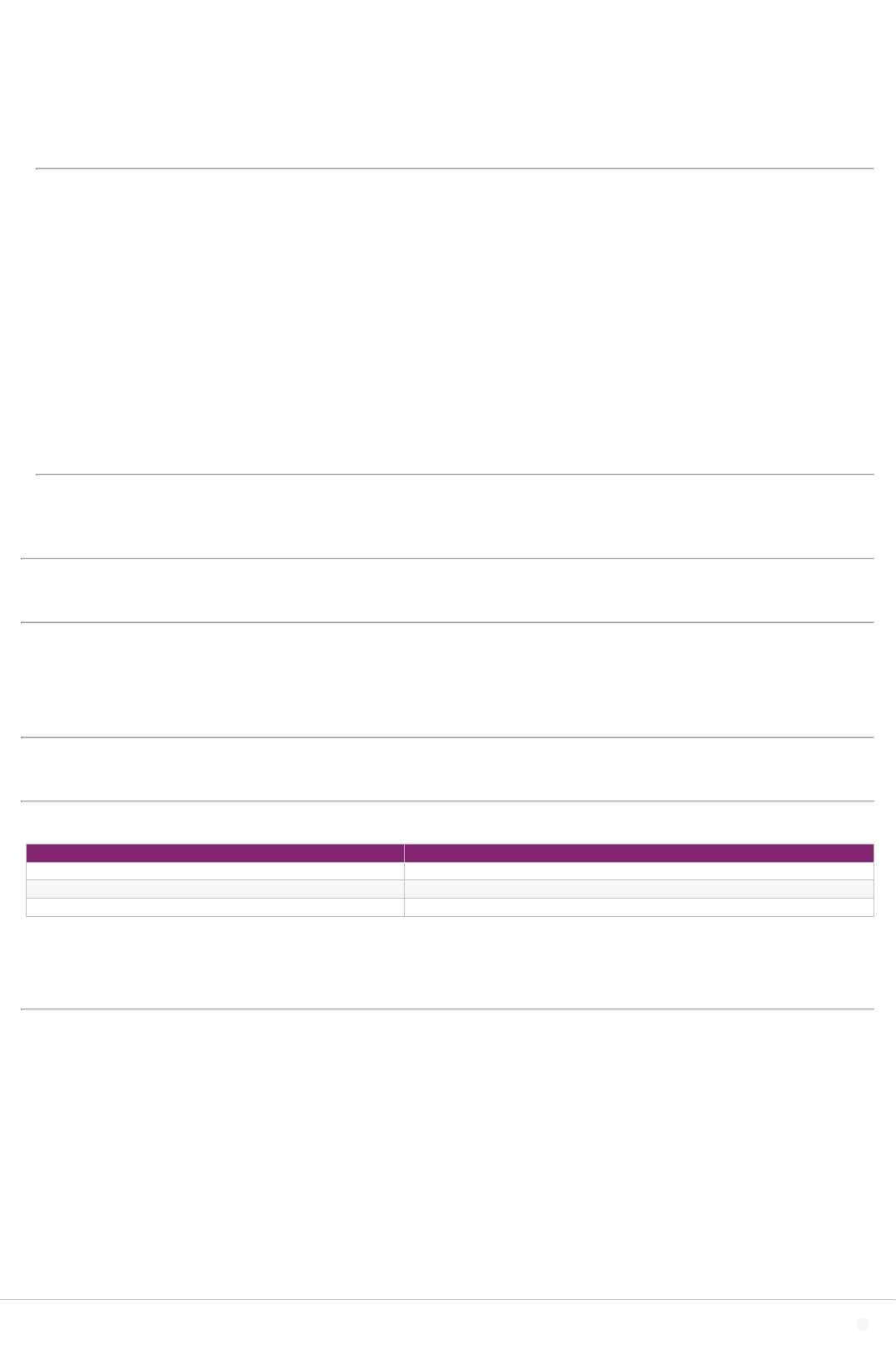
Is this electricity consumption excluded from your RE100 commitment?
<Not Applicable>
Consumption of purchased heat, steam, and cooling (MWh)
0
Consumption of self-generated heat, steam, and cooling (MWh)
0
Total non-fuel energy consumption (MWh) [Auto-calculated]
70.3
Country/area
Luxembourg
Consumption of purchased electricity (MWh)
249.45
Consumption of self-generated electricity (MWh)
0
Is this electricity consumption excluded from your RE100 commitment?
<Not Applicable>
Consumption of purchased heat, steam, and cooling (MWh)
0
Consumption of self-generated heat, steam, and cooling (MWh)
0
Total non-fuel energy consumption (MWh) [Auto-calculated]
249.45
C9. Additional metrics
C9.1
(C9.1) Provide any additional climate-related metrics relevant to your business.
C10. Verification
C10.1
(C10.1) Indicate the verification/assurance status that applies to your reported emissions.
Verification/assurance status
Scope 1 Third-party verification or assurance process in place
Scope 2 (location-based or market-based) Third-party verification or assurance process in place
Scope 3 Third-party verification or assurance process in place
C10.1a
CDP Page of 6351

(C10.1a) Provide further details of the verification/assurance undertaken for your Scope 1 emissions, and attach the relevant statements.
Verification or assurance cycle in place
Annual process
Status in the current reporting year
Complete
Type of verification or assurance
Limited assurance
Attach the statement
PayPal-2022-Global-Impact-Report_FINAL.pdf
Page/ section reference
Pages 50-51
Relevant standard
ISAE3000
Proportion of reported emissions verified (%)
100
C10.1b
(C10.1b) Provide further details of the verification/assurance undertaken for your Scope 2 emissions and attach the relevant statements.
Scope 2 approach
Scope 2 market-based
Verification or assurance cycle in place
Annual process
Status in the current reporting year
Complete
Type of verification or assurance
Limited assurance
Attach the statement
PayPal-2022-Global-Impact-Report_FINAL.pdf
Page/ section reference
Pages 50-51
Relevant standard
ISAE3000
Proportion of reported emissions verified (%)
100
Scope 2 approach
Scope 2 location-based
Verification or assurance cycle in place
Annual process
Status in the current reporting year
Complete
Type of verification or assurance
Limited assurance
Attach the statement
PayPal-2022-Global-Impact-Report_FINAL.pdf
Page/ section reference
Pages 50-51
Relevant standard
ISAE3000
Proportion of reported emissions verified (%)
100
C10.1c
CDP Page of 6352

(C10.1c) Provide further details of the verification/assurance undertaken for your Scope 3 emissions and attach the relevant statements.
Scope 3 category
Scope 3: Fuel and energy-related activities (not included in Scopes 1 or 2)
Verification or assurance cycle in place
Annual process
Status in the current reporting year
Complete
Type of verification or assurance
Limited assurance
Attach the statement
PayPal-2022-Global-Impact-Report_FINAL.pdf
Page/section reference
Pages 50-51
Relevant standard
ISAE3000
Proportion of reported emissions verified (%)
100
Scope 3 category
Scope 3: Business travel
Verification or assurance cycle in place
Annual process
Status in the current reporting year
Complete
Type of verification or assurance
Limited assurance
Attach the statement
PayPal-2022-Global-Impact-Report_FINAL.pdf
Page/section reference
Pages 50-51
Relevant standard
ISAE3000
Proportion of reported emissions verified (%)
100
Scope 3 category
Scope 3: Employee commuting
Verification or assurance cycle in place
Annual process
Status in the current reporting year
Complete
Type of verification or assurance
Limited assurance
Attach the statement
PayPal-2022-Global-Impact-Report_FINAL.pdf
Page/section reference
Pages 50-51
Relevant standard
ISAE3000
Proportion of reported emissions verified (%)
100
C10.2
(C10.2) Do you verify any climate-related information reported in your CDP disclosure other than the emissions figures reported in C6.1, C6.3, and C6.5?
Yes
C10.2a
CDP Page of 6353

(C10.2a) Which data points within your CDP disclosure have been verified, and which verification standards were used?
Disclosure module
verification relates to
Data verified Verification
standard
Please explain
C4. Targets and
performance
Other, please specify
(Renewable Energy Use)
ISAE3000 We believe ISAE3000 is a robust standard for assurance of non-financial information. We obtain limited external assurance of PayPal’s
renewable energy use data, as a % of total energy use and % of data centers total energy use, on an annual basis.
C4. Targets and
performance
Other, please specify (Vendors
with Science-Based Targets)
ISAE3000 We believe ISAE3000 is a robust standard for assurance of non-financial information. We obtain limited external assurance of PayPal
vendors with science-based targets (% of vendors by spend) on an annual basis.
C4. Targets and
performance
Progress against emissions
reduction target
ISAE3000 We believe ISAE3000 is a robust standard for assurance of non-financial information. We obtain limited external assurance of PayPal’s
reduction in operational GHG Emissions (% since 2019 base year) on an annual basis.
C8. Energy Energy consumption ISAE3000 We believe ISAE3000 is a robust standard for assurance of non-financial information. We obtain limited external assurance of PayPal’s
global energy use data, which includes our offices and data centers, on an annual basis.
C11. Carbon pricing
C11.1
(C11.1) Are any of your operations or activities regulated by a carbon pricing system (i.e. ETS, Cap & Trade or Carbon Tax)?
No, and we do not anticipate being regulated in the next three years
C11.2
(C11.2) Has your organization canceled any project-based carbon credits within the reporting year?
Yes
C11.2a
(C11.2a) Provide details of the project-based carbon credits canceled by your organization in the reporting year.
Project type
Energy efficiency: households
Type of mitigation activity
Emissions reduction
Project description
Distribution of LED lightbulbs in India to improve the demand-supply gap in the Northeast region, by helping reduce peak hour demand for power in residential areas,
reduce greenhouse gases otherwise generated by the use of inefficient incandescent bulbs and/or kerosene lamps, and reduce utility/fuel costs for low-income households.
Credits canceled by your organization from this project in the reporting year (metric tons CO2e)
6000
Purpose of cancellation
Voluntary offsetting
Are you able to report the vintage of the credits at cancellation?
Yes
Vintage of credits at cancellation
2021
Were these credits issued to or purchased by your organization?
Purchased
Credits issued by which carbon-crediting program
VCS (Verified Carbon Standard)
Method(s) the program uses to assess additionality for this project
Market penetration assessment
Other, please specify (Local energy efficiency policies and incentives)
Approach(es) by which the selected program requires this project to address reversal risk
No risk of reversal
Potential sources of leakage the selected program requires this project to have assessed
Other, please specify (Emissions leakage assessed and determined to be not applicable)
Provide details of other issues the selected program requires projects to address
Regional energy grid impact assessment
Comment
CDP Page of 6354

C11.3
(C11.3) Does your organization use an internal price on carbon?
No, but we anticipate doing so in the next two years
C12. Engagement
C12.1
(C12.1) Do you engage with your value chain on climate-related issues?
Yes, our suppliers
Yes, other partners in the value chain
C12.1a
(C12.1a) Provide details of your climate-related supplier engagement strategy.
Type of engagement
Engagement & incentivization (changing supplier behavior)
Details of engagement
Provide training, support, and best practices on how to set science-based targets
% of suppliers by number
6
% total procurement spend (direct and indirect)
68
% of supplier-related Scope 3 emissions as reported in C6.5
Rationale for the coverage of your engagement
In 2021, as part of our validated Science-Based Target, we announced our commitment to engage with our supply chain so that 75% of our vendors by spend in relevant
categories set their own science-based targets by 2025. Our vendor climate engagement efforts cover our highest impact upstream Scope 3 GHG emissions categories,
including purchased goods and services, capital goods, business travel, and upstream transportation and distribution. In 2022, we engaged with nearly 300 of our vendors
within these Scope 3 emissions categories, or approximately 68% of vendors by total spend, who were selected based on amount of spend and related estimated
emissions intensity.
Impact of engagement, including measures of success
In 2022, we continued to strategically partner with our vendors to set their own science-based reduction targets and achieve our goal of having 75% of our procurement
spend from purchased goods and services, capital goods, business travel, and upstream transportation and distribution with vendors who have set their own science-based
targets by 2025. We believe this will help us manage and reduce the scope 3 emissions associated with the products and services we procure as we work towards our
long-term goal of net-zero GHG emissions across our company-wide operations and value chain by 2040.
In partnership with CDP Supply Chain, we requested corporate environmental data from nearly 300 vendors within the relevant Scope 3 categories in 2022, allowing us to
better understand how to support and strategically partner with our vendors in this area. We deployed targeted communications and trainings on topics, including GHG
inventory, target setting, and external disclosure of environmental data. We assess and track the climate maturity of vendors based on collected climate data, including GHG
inventory, external reporting, and emissions reductions targets, if any.
We measure the success of this engagement through the following KPI: percentage (%) of vendors by spend within the relevant Scope 3 categories who have set or
committed to a science-based target. This KPI measures our progress on our goal (or threshold of success) of 75% by 2025. Impact of engagement: As of 2022, 39% of our
vendors by spend within the relevant categories was covered by science-based climate targets, an increase from 30% as of 2021 and 27% as of 2020. Other positive
outcomes achieved through our vendor climate engagement efforts include vendors’ first-time disclosure of environmental data and ongoing discussions with vendors with
low climate maturity to share best practices to advance their overall environmental sustainability programs.
Comment
C12.1d
(C12.1d) Give details of your climate-related engagement strategy with other partners in the value chain.
We are engaging with various non-profit partner organizations focused on digital finance solutions for climate resilience. PayPal is a founding member of the Climate
Innovation for Adaptation and Resilience (CIFAR) Alliance, a global initiative working to provide climate adaptation and resilience tools and resources to one billion of the
world’s most vulnerable people. The CIFAR Alliance evolved from the Digital Finance for Climate Resilience Task Force launched in 2021. The Alliance brings together over
40 members, funders and contributing organizations, representing expertise across digital innovation, economic development, and climate. For example, in 2022, the Alliance
launched the Carbon Finance Opportunity Brief, which explores how the voluntary carbon market could help provide economic incentives for climate mitigation and
adaptation in Africa.
CDP Page of 6355

C12.2
(C12.2) Do your suppliers have to meet climate-related requirements as part of your organization’s purchasing process?
Yes, suppliers have to meet climate-related requirements, but they are not included in our supplier contracts
C12.2a
(C12.2a) Provide details of the climate-related requirements that suppliers have to meet as part of your organization’s purchasing process and the compliance
mechanisms in place.
Climate-related requirement
Complying with regulatory requirements
Description of this climate related requirement
PayPal expects third parties and subcontractors to (i) comply with PayPal’s Third-Party Code of Conduct and Ethics, which sets forth our expectations regarding, among
other topics, environmental responsibility and compliance, or (ii) provide their own contractual obligations affirming similar standards. PayPal strives to ensure third parties
comply with the Code and address potential instances of non-compliance. The Code states that vendors shall develop and implement environmental responsible business
practices to reduce our environmental impact and strongly encourages vendors to adopt strategic priorities including reducing GHG emissions, energy, input materials and
waste by practices such as modifying production, maintenance and facility processes, materials substitution, conservation, use of renewable resources, recycling and re-
using materials. All required environmental permits (e.g., discharge monitoring), approvals and registrations are to be obtained, maintained and kept current and their
operational and reporting requirements are to be followed. In addition, the Code states that third parties are expected to cooperate with potential periodic data requests
which support PayPal’s environmental reporting.
% suppliers by procurement spend that have to comply with this climate-related requirement
100
% suppliers by procurement spend in compliance with this climate-related requirement
100
Mechanisms for monitoring compliance with this climate-related requirement
Supplier self-assessment
Grievance mechanism/Whistleblowing hotline
Other, please specify (Our third-party risk management programs work to establish risk-based due diligence for new and existing suppliers based on potential risks and
impacts of their product or service to our business. )
Response to supplier non-compliance with this climate-related requirement
Retain and engage
C12.3
(C12.3) Does your organization engage in activities that could either directly or indirectly influence policy, law, or regulation that may impact the climate?
Row 1
External engagement activities that could directly or indirectly influence policy, law, or regulation that may impact the climate
Yes, we engage directly with policy makers
Yes, our membership of/engagement with trade associations could influence policy, law, or regulation that may impact the climate
Does your organization have a public commitment or position statement to conduct your engagement activities in line with the goals of the Paris Agreement?
Yes
Attach commitment or position statement(s)
PayPal, Inc - How We Work - Environmental Sustainability.pdf
Describe the process(es) your organization has in place to ensure that your external engagement activities are consistent with your climate commitments and/or
climate transition plan
PayPal has employed an integrated approach to its enterprise-wide ESG strategy, which includes understanding and managing our climate-related risks and opportunities.
This strategy is implemented by the ESG and Environmental Working Groups which drive initiative development and execution. Members of the Environmental Working
Group include representatives from Government Relations, Legal, Communications, Sourcing, Real Estate & Facilities, Data Center Operations, Environmental Health and
Safety, and other groups. The ESG Steering Committee, consisting of multi-functional senior leaders across PayPal, provides strategic direction and leadership for the
continued development of our ESG strategy. The ESG Steering Committee oversees program implementation through the ESG and Environmental Working Groups.
Representatives from the ESG Steering Committee update members of PayPal’s senior management on relevant environmental matters based on reports from the ESG
and Environmental Working Groups. This structure helps ensure that our public policy engagement activities are discussed and aligned across leadership and the relevant
entities at PayPal. Lastly, we maintain a small cohort of individuals that are permitted to engage on policy activities that are directly involved with our ESG framework and
Environmental Sustainability program.
Primary reason for not engaging in activities that could directly or indirectly influence policy, law, or regulation that may impact the climate
<Not Applicable>
Explain why your organization does not engage in activities that could directly or indirectly influence policy, law, or regulation that may impact the climate
<Not Applicable>
C12.3a
CDP Page of 6356

(C12.3a) On what policy, law, or regulation that may impact the climate has your organization been engaging directly with policy makers in the reporting year?
Specify the policy, law, or regulation on which your organization is engaging with policy makers
Securities and Exchange Commission Proposed Rule, File Number
S7-10-22: The Enhancement and Standardization of Climate-Related Disclosures for Investors
Category of policy, law, or regulation that may impact the climate
Climate change mitigation
Focus area of policy, law, or regulation that may impact the climate
Climate-related reporting
Policy, law, or regulation geographic coverage
National
Country/area/region the policy, law, or regulation applies to
United States of America
Your organization’s position on the policy, law, or regulation
Support with minor exceptions
Description of engagement with policy makers
PayPal submitted a public comment letter dated June 17, 2022 with other technology companies on the U.S. Securities and Exchange Commission’s (SEC) proposed rule
“The Enhancement and Standardization of Climate-Related Disclosures for Investors."
Details of exceptions (if applicable) and your organization’s proposed alternative approach to the policy, law or regulation
PayPal supports enhancing consistent, comparable, and meaningful climate-related disclosures with certain modifications to the SEC’s Proposed Rule. We recommended
investor-focused adjustments to, for example: (1) the set thresholds for the disclosure of information, instead basing disclosure requirements on existing definitions of
materiality; (2) financial statement line items, instead focusing on discrete climate-related events or significant transition activities; (3) the method to establish organizational
boundaries for reporting greenhouse gas (GHG) emissions data, instead adopting the approach recommended in the GHG Protocol; and (4) timeline requirements.
Have you evaluated whether your organization’s engagement on this policy, law, or regulation is aligned with the goals of the Paris Agreement?
Yes, we have evaluated, and it is aligned
Please explain whether this policy, law or regulation is central to the achievement of your climate transition plan and, if so, how?
In 2021, we announced our goal to achieve net-zero emissions by 2040 along with medium-term science-based targets, aligned to the 1.5C pathway and Paris Agreement,
covering our operations and supply chain. Progress towards achieving our science-based climate goals will be aided by consistent, comparable and meaningful external
climate-related disclosure requirements.
C12.3b
CDP Page of 6357

(C12.3b) Provide details of the trade associations your organization is a member of, or engages with, which are likely to take a position on any policy, law or
regulation that may impact the climate.
Trade association
Business Roundtable
Is your organization’s position on climate change policy consistent with theirs?
Mixed
Has your organization attempted to influence their position in the reporting year?
Yes, we attempted to influence them but they did not change their position
Describe how your organization’s position is consistent with or differs from the trade association’s position, and any actions taken to influence their position
Business Roundtable supports a market-based emissions reduction strategy, including a price on carbon where feasible and effective. They hold that this approach must be
pursued in a manner that ensures environmental effectiveness fostering innovation, maintaining U.S. competitiveness, maximizing compliance flexibility, and minimizing
costs to business and society. In addition, Business Roundtable believes corporations should support sound public policies and drive the innovation needed to address
climate change. Business Roundtable believes that effective climate disclosures should focus on a company’s approach to risk management and its connection to the
company’s strategy and governance. In response to the Securities and Exchange Commission’s (SEC) climate disclosure request for information, Business Roundtable
supports developing a framework for mandatory climate-related disclosure with major provisions.
PayPal supports market-based climate solutions aligned with the goals set forth in the Paris Agreement and has pledged to achieve net-zero emissions by 2040, aligned
with a 1.5°C pathway. In 2021 and 2022, PayPal submitted public comments related to the U.S. Securities and Exchange Commission‘s (SEC) proposed climate disclosure
rule in support of a mandatory climate reporting with minor exceptions. As a member of Business Roundtable, we continue to share our perspectives with Business
Roundtable, including in group discussion to help inform their approach and position.
Funding figure your organization provided to this trade association in the reporting year (currency as selected in C0.4)
Describe the aim of your organization’s funding
<Not Applicable>
Have you evaluated whether your organization’s engagement with this trade association is aligned with the goals of the Paris Agreement?
Yes, we have evaluated, and it is aligned
Trade association
Other, please specify (TechNet)
Is your organization’s position on climate change policy consistent with theirs?
Consistent
Has your organization attempted to influence their position in the reporting year?
No, we did not attempt to influence their position
Describe how your organization’s position is consistent with or differs from the trade association’s position, and any actions taken to influence their position
TechNet supports sound environmental justice policies that address climate change based on global geopolitical engagement, cooperation, and accountability. In addition,
they support advanced energy policies that foster and promote a climate for innovation while providing safeguards against inaction and mitigating the impact of new
regulations on economic prosperity. TechNet supports technology-neutral, market-based policies that address climate change and accelerate the deployment of low and
zero-carbon energy technologies; promote innovation; bring competition to the renewable energy market; foster clean transportation; and measure success through
scientific benchmarking and successful policy development supporting a new climate future. For example, TechNet has called for the U.S. federal government to set
science-based targets for climate action that limit warming to no more than 1.5 degrees Celsius by the year 2050. TechNet also supported the climate provisions of the U.S.
Inflation Reduction Act (IRA) in 2022.
PayPal has committed to reaching net-zero greenhouse gas emissions by 2040 and established science-based targets as clear intermediate milestones for transparently
tracking progress. We support policies that help to promote innovation, such as bringing additional renewable energy or new carbon-free technologies to market, and that
create market-based carbon pricing regimes.
Funding figure your organization provided to this trade association in the reporting year (currency as selected in C0.4)
Describe the aim of your organization’s funding
<Not Applicable>
Have you evaluated whether your organization’s engagement with this trade association is aligned with the goals of the Paris Agreement?
Yes, we have evaluated, and it is aligned
C12.4
CDP Page of 6358

(C12.4) Have you published information about your organization’s response to climate change and GHG emissions performance for this reporting year in places
other than in your CDP response? If so, please attach the publication(s).
Publication
In mainstream reports
Status
Complete
Attach the document
PayPal-Holdings-Inc-Combined-2023-Proxy-Statement-and-2022-Annual-Report.pdf
Page/Section reference
Pages 11, 31, 39-41 (Proxy Statement), Page 26 (Annual Report)
Content elements
Governance
Strategy
Risks & opportunities
Emission targets
Comment
Publication
In voluntary sustainability report
Status
Complete
Attach the document
PayPal-2022-Global-Impact-Report_FINAL.pdf
Page/Section reference
Pages 33-36, 38-39, 48-49
Content elements
Governance
Strategy
Risks & opportunities
Emissions figures
Emission targets
Other metrics
Comment
Publication
Other, please specify (TCFD Index)
Status
Complete
Attach the document
PayPal TCFD Index 2022.pdf
Page/Section reference
All
Content elements
Governance
Strategy
Risks & opportunities
Emissions figures
Emission targets
Other metrics
Comment
Publication
In voluntary communications
Status
Complete
Attach the document
PayPal, Inc - How We Work - Environmental Sustainability.pdf
Page/Section reference
Page 1-9 of PDF printout of PayPal’s Environmental Sustainability Website (https://about.pypl.com/how-we-work/environmental-sustainability/default.aspx)
Content elements
Strategy
Emission targets
Other metrics
Comment
CDP Page of 6359
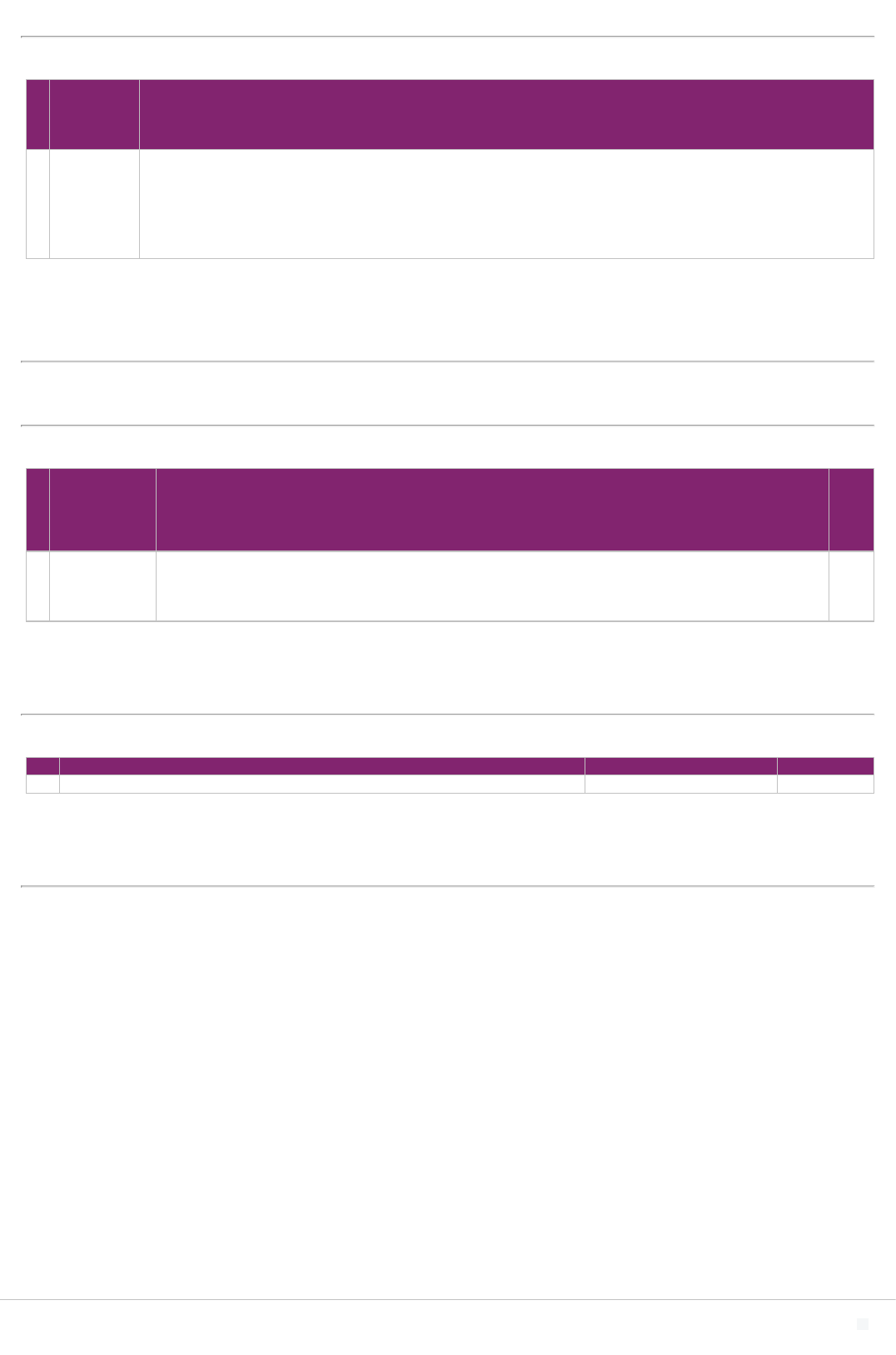
C12.5
(C12.5) Indicate the collaborative frameworks, initiatives and/or commitments related to environmental issues for which you are a signatory/member.
Environmental
collaborative
framework,
initiative and/or
commitment
Describe your organization’s role within each framework, initiative and/or commitment
Row
1
Business Ambition
for 1.5C
UN Global Compact
We Are Still In
We Mean Business
Other, please specify
(United for the Paris
Agreement)
PayPal has joined select initiatives including the Business Ambition for 1.5C, We Are Still In, United for the Paris Agreement and We Mean Business in support of the Paris Agreement.
PayPal has committed to reaching net-zero greenhouse gas emissions by 2040 and has established science-based targets as clear intermediate milestones for transparently tracking
progress. As a member of the U.N. Global Compact (UNGC), we report on our contribution to the Ten Principles, which encourage adoption of sustainable and socially responsible
policies aligned with the U.N. Sustainable Development Goals.
C15. Biodiversity
C15.1
(C15.1) Is there board-level oversight and/or executive management-level responsibility for biodiversity-related issues within your organization?
Board-level oversight
and/or executive
management-level
responsibility for
biodiversity-related
issues
Description of oversight and objectives relating to biodiversity Scope of
board-
level
oversight
Row
1
Yes, both board-level
oversight and executive
management-level
responsibility
As specified in its publicly available Charter, the Corporate Governance and Nominating Committee of PayPal’s Board of Directors provides oversight to ESG matters,
including biodiversity matters as relevant for the business. The Committee’s responsibilities include reviewing progress in developing and implementing strategies for
managing relevant environmental aspects, including management of climate-related risks and opportunities. PayPal executives, including our Chief Corporate Affairs
Officer and Chief Financial Officer and in partnership with other senior leaders, direct and manage the execution of our enterprise-wide ESG strategy, including
biodiversity matters, when relevant.
<Not
Applicabl
e>
C15.2
(C15.2) Has your organization made a public commitment and/or endorsed any initiatives related to biodiversity?
Indicate whether your organization made a public commitment or endorsed any initiatives related to biodiversity Biodiversity-related public commitments Initiatives endorsed
Row 1 No, and we do not plan to do so within the next 2 years <Not Applicable> <Not Applicable>
C15.3
CDP Page of 6360
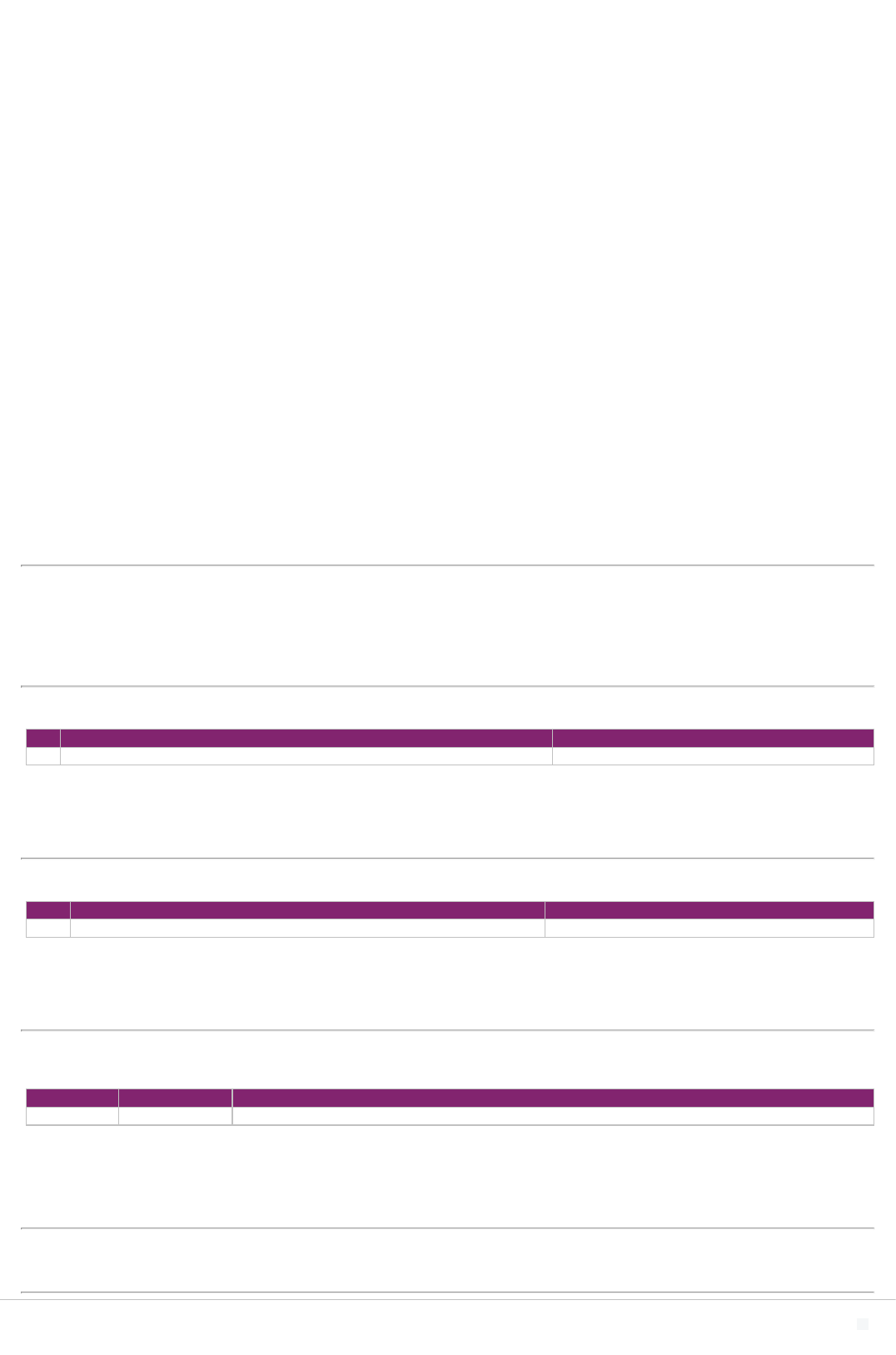
(C15.3) Does your organization assess the impacts and dependencies of its value chain on biodiversity?
Impacts on biodiversity
Indicate whether your organization undertakes this type of assessment
No and we don’t plan to within the next two years
Value chain stage(s) covered
<Not Applicable>
Portfolio activity
<Not Applicable>
Tools and methods to assess impacts and/or dependencies on biodiversity
<Not Applicable>
Please explain how the tools and methods are implemented and provide an indication of the associated outcome(s)
<Not Applicable>
Dependencies on biodiversity
Indicate whether your organization undertakes this type of assessment
No and we don’t plan to within the next two years
Value chain stage(s) covered
<Not Applicable>
Portfolio activity
<Not Applicable>
Tools and methods to assess impacts and/or dependencies on biodiversity
<Not Applicable>
Please explain how the tools and methods are implemented and provide an indication of the associated outcome(s)
<Not Applicable>
C15.4
(C15.4) Does your organization have activities located in or near to biodiversity- sensitive areas in the reporting year?
Not assessed
C15.5
(C15.5) What actions has your organization taken in the reporting year to progress your biodiversity-related commitments?
Have you taken any actions in the reporting period to progress your biodiversity-related commitments? Type of action taken to progress biodiversity- related commitments
Row 1 No, and we do not plan to undertake any biodiversity-related actions <Not Applicable>
C15.6
(C15.6) Does your organization use biodiversity indicators to monitor performance across its activities?
Does your organization use indicators to monitor biodiversity performance? Indicators used to monitor biodiversity performance
Row 1 No Please select
C15.7
(C15.7) Have you published information about your organization’s response to biodiversity-related issues for this reporting year in places other than in your CDP
response? If so, please attach the publication(s).
Report type Content elements Attach the document and indicate where in the document the relevant biodiversity information is located
No publications <Not Applicable> <Not Applicable>
C16. Signoff
C-FI
CDP Page of 6361

(C-FI) Use this field to provide any additional information or context that you feel is relevant to your organization's response. Please note that this field is optional
and is not scored.
C16.1
(C16.1) Provide details for the person that has signed off (approved) your CDP climate change response.
Job title Corresponding job category
Row 1 Interim Chief Financial Officer Chief Financial Officer (CFO)
SC. Supply chain module
SC0.0
(SC0.0) If you would like to do so, please provide a separate introduction to this module.
SC0.1
(SC0.1) What is your company’s annual revenue for the stated reporting period?
Annual Revenue
Row 1 27518000000
SC1.1
(SC1.1) Allocate your emissions to your customers listed below according to the goods or services you have sold them in this reporting period.
SC1.2
(SC1.2) Where published information has been used in completing SC1.1, please provide a reference(s).
SC1.3
(SC1.3) What are the challenges in allocating emissions to different customers, and what would help you to overcome these challenges?
Allocation challenges Please explain what would help you overcome these challenges
SC1.4
(SC1.4) Do you plan to develop your capabilities to allocate emissions to your customers in the future?
Please select
SC2.1
(SC2.1) Please propose any mutually beneficial climate-related projects you could collaborate on with specific CDP Supply Chain members.
SC2.2
(SC2.2) Have requests or initiatives by CDP Supply Chain members prompted your organization to take organizational-level emissions reduction initiatives?
Please select
CDP Page of 6362

SC4.1
(SC4.1) Are you providing product level data for your organization’s goods or services?
Please select
Submit your response
In which language are you submitting your response?
English
Please confirm how your response should be handled by CDP
I understand that my response will be shared with all requesting stakeholders Response permission
Please select your submission options Yes Public
Please confirm below
I have read and accept the applicable Terms
CDP Page of 6363
